
25 Advantages and Disadvantages of Market Research
Market research is a systematic process of collecting, analyzing, and interpreting data and information to gain insights into various aspects of a market, including its size, trends, customer preferences, competition, and potential opportunities or threats. It is a fundamental tool used by businesses, organizations, and governments to make informed decisions, develop effective strategies, and stay competitive in their respective markets.

Market research has ancient roots. It dates back to the time of the Babylonians, who gathered information on crop yields and prices. Even in those early days, data collection and analysis were used to make informed decisions.
To capture a holistic view of consumer behavior , market researchers often combine data from various channels, including social media, e-commerce, traditional surveys, and customer support interactions.
While market research offers numerous advantages, it also comes with its fair share of disadvantages.
Advantages of Market Research
The advantages of market research are not just about surface-level benefits. They are about deepening understanding, mitigating risks, and driving sustainable growth.
1. Informed Decision-Making
Market research provides businesses with a wealth of information that forms the foundation for informed decision-making.
This advantage goes beyond the general idea of making better choices. It means that decisions are grounded in empirical evidence and insights gathered from data analysis. This precision can lead to more effective resource allocation, optimized strategies, and ultimately, increased profitability.
2. Customer Understanding
The understanding of customers garnered through market research is multifaceted. It goes beyond merely recognizing demographics ; it delves into psychographics, behavior, motivations, and pain points.
In-depth customer profiles help businesses craft highly targeted marketing campaigns, design products that meet specific needs, and enhance customer experiences. The result is not just customer satisfaction but customer loyalty and advocacy.
3. Competitive Advantage
Market research serves as a strategic compass for gaining a competitive advantage. It allows businesses to assess their strengths and weaknesses relative to competitors.
By benchmarking performance against rivals, companies can identify areas for improvement or differentiation. This advantage is not about following the competition but strategically outperforming them in ways that resonate with customers.
4. Risk Mitigation
Market research plays a pivotal role in risk mitigation. It’s not just about identifying risks but also understanding their potential impact.
Businesses can use market research to assess the severity of threats and the likelihood of their occurrence. Armed with this knowledge, they can develop contingency plans, adapt to changing market conditions, and reduce exposure to unforeseen risks.
5. Product Development
The advantage of market research in product development is not limited to identifying features customers desire. It extends to optimizing the entire product life cycle. Research helps in defining product specifications, pricing strategies, and launch plans.
It also guides post-launch improvements based on feedback and market response. This iterative approach leads to more successful products with a higher chance of market acceptance.
6. Market Segmentation
Market segmentation through research is akin to using a finely tuned lens to view a diverse audience. It allows businesses to create highly tailored marketing messages, product variations, and distribution channels for each segment.
This personalization leads to higher conversion rates, better customer engagement, and more efficient use of marketing resources.
7. Measuring Effectiveness
Market research doesn’t stop after implementing strategies; it includes continuous monitoring and evaluation. It allows businesses to measure the effectiveness of marketing campaigns, product launches, and other initiatives.
Metrics like customer acquisition cost (CAC), customer lifetime value (CLV), and conversion rates help gauge success. This feedback loop ensures strategies can be adjusted in real time for maximum impact.
8. Enhanced Communication
Effective communication is at the heart of successful marketing, and market research is the cornerstone of this process. It helps businesses understand the language, preferences, and communication channels favored by their target audience .
By tailoring messages accordingly, companies can create a genuine connection with customers, fostering brand loyalty and advocacy.
9. Cost Efficiency
The cost-efficiency advantage of market research extends beyond immediate savings. It ensures that resources are allocated where they are most likely to generate returns.
By avoiding wasted efforts on unproductive strategies or irrelevant markets, businesses can achieve higher returns on investment (ROI) and operate more efficiently.
10. Long-Term Growth
Market research isn’t just about short-term gains; it’s a catalyst for long-term growth. It facilitates innovation, identifies emerging trends, and helps businesses evolve with changing consumer preferences.
This adaptability is essential for sustained success and staying ahead in a dynamic marketplace.
11. Brand Building
Market research plays a pivotal role in brand building. It helps businesses understand how their brand is perceived by customers and competitors.

By conducting brand perception surveys and analyzing the results, companies can identify areas for improvement in brand image, messaging, and positioning. This insight allows for the development of a more compelling and consistent brand identity , which is essential for long-term success and customer loyalty.
12. Product Innovation
Market research is instrumental in driving product innovation . Beyond simply understanding customer needs, it delves into anticipating future needs and desires.
Through methods like trend analysis and concept testing, businesses can identify emerging market trends and consumer preferences. This proactive approach enables companies to stay ahead of the curve by developing innovative products that resonate with evolving consumer demands.
13. Optimized Pricing Strategies
Pricing is a critical element of any business strategy, and market research provides invaluable insights for optimizing pricing strategies .
By conducting pricing surveys, competitive pricing analysis, and willingness-to-pay studies, companies can set prices that maximize revenue while remaining competitive. This precision in pricing can lead to increased profit margins and improved market positioning.
14. Global Expansion
For businesses considering global expansion, market research is indispensable. It helps in assessing the viability of entering new markets by providing insights into local consumer behavior , cultural nuances, regulatory environments, and competitive landscapes.
In-depth international market research ensures that expansion efforts are well-informed, reducing the risks associated with entering unfamiliar territories.
15. Evaluating Marketing Channels
In the digital age, businesses have a multitude of marketing channels at their disposal, from social media and email marketing to content marketing and influencer partnerships.
Market research helps in evaluating the effectiveness of these channels for reaching and engaging with the target audience. By analyzing customer preferences and behavior, businesses can allocate marketing budgets to the most productive channels, maximizing their marketing ROI.
Disadvantages of Market Research
Certainly, let’s explore the disadvantages of market research in greater detail, shedding light on the intricacies and potential challenges associated with this crucial business practice.
1. Costly and Time-Consuming
Market research can be a resource-intensive endeavor. The costs associated with data collection, analysis, and hiring experts can add up quickly, especially for small businesses with limited budgets .
Additionally , conducting comprehensive research often takes time, and in rapidly changing markets, delays can lead to missed opportunities.
2. Risk of Bias
Bias is a significant concern in market research. Researchers and survey designers must be vigilant to minimize bias in various forms, including question phrasing, sample selection, and interpretation of results.
Failure to address bias can lead to skewed data, undermining the reliability and accuracy of research findings.
3. Complex Data Analysis
Interpreting market research data can be complex, requiring expertise in statistics and data analysis.
Misinterpretation of data or improper statistical methods can lead to incorrect conclusions and misguided decision-making. This complexity may necessitate the involvement of trained analysts or data scientists.
4. Overreliance on Data
While data-driven decision-making is essential, an overreliance on data can stifle innovation and creativity.

Market research primarily deals with existing data and known trends, which may limit the exploration of new ideas and unconventional solutions. Striking a balance between data-driven insights and strategic vision is crucial for holistic decision-making.
5. Limited Predictive Power
Market research excels at providing insights into past and current market conditions, but predicting the future is inherently challenging.
Rapid changes in consumer behavior, technological advancements, and external factors can make accurate forecasting difficult. Businesses should be aware that research findings are not crystal balls but rather informed estimations.
6. Data Privacy Concerns
With the increasing emphasis on data privacy regulations and ethical considerations, mishandling customer data can lead to legal issues and reputational damage.
Businesses must navigate a complex landscape of data protection laws and ensure they handle customer information ethically and transparently.
7. Information Overload
In the digital age, businesses have access to vast amounts of data. Handling this information overload can be overwhelming.
Distinguishing valuable insights from noise and managing the sheer volume of data can be challenging, requiring robust data management systems and skilled analysts.
8. Resistance to Change
Implementing changes based on market research findings can be met with resistance, particularly if the findings challenge established beliefs or practices within an organization.
Managing organizational change , convincing stakeholders, and aligning teams with research-driven strategies can be a complex and time-consuming process.
9. Competitive Intelligence Risks
While monitoring competitors is crucial, there’s a risk of overemphasizing competitive intelligence to the detriment of innovation.
Focusing too much on what competitors are doing can lead to a “ follow the leader ” mentality rather than forging a unique market position. Businesses should use competitive intelligence as a tool for inspiration rather than imitation.
10. Sample Size Limitations
The accuracy of market research findings heavily depends on the representativeness of the sample used for data collection.
Small or unrepresentative samples can lead to skewed results and misguided strategies. Ensuring a large enough and diverse sample can be challenging, especially when dealing with niche markets or elusive demographics.
Conclusion:
Market research is a valuable tool for businesses seeking to thrive in competitive markets. It offers a plethora of advantages, including informed decision-making, customer understanding, and a competitive edge. However , it is not without its drawbacks, such as costliness, bias, and limitations in predicting the future.
To harness the benefits of market research while mitigating its disadvantages, businesses must approach it strategically. They should invest in high-quality research, ensure data integrity, and strike a balance between data-driven decisions and visionary thinking.
Moreover , staying updated on ethical and legal considerations in data collection and management is crucial to maintaining a positive reputation and customer trust.
In a rapidly changing business landscape, market research remains an indispensable tool for companies looking to adapt, grow, and succeed. When conducted thoughtfully and with a keen understanding of its strengths and weaknesses, market research can be a cornerstone of sustainable business success.
Related Posts

What is the Importance of Management Accounting for Business?
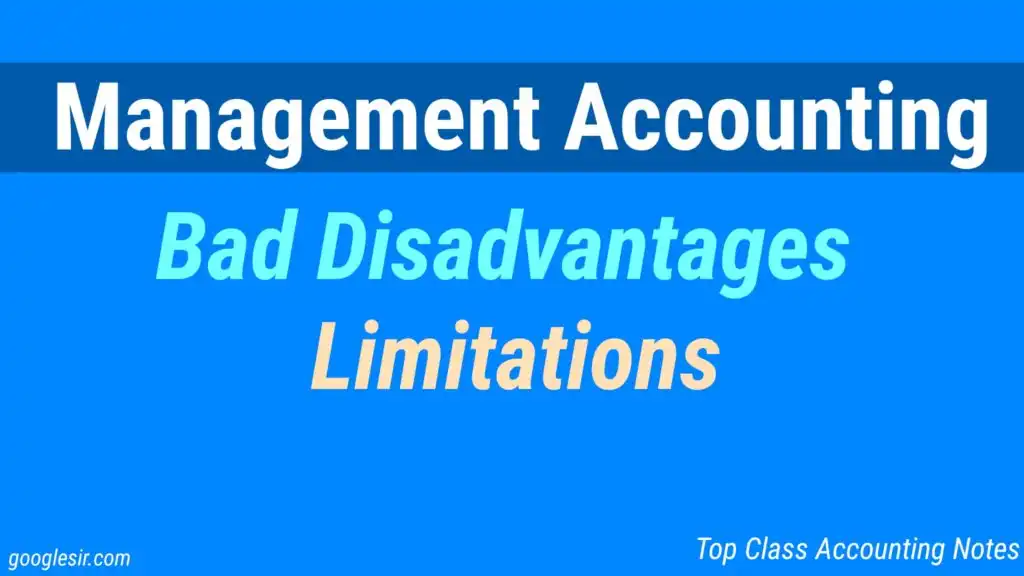
What are the Major Disadvantages of Management Accounting?
Sales CRM Terms
What is Market Research? (Explained With Examples)
Oct 11, 2023

Market research is an essential component of any business strategy. It helps companies understand their target market, identify consumer preferences, and make informed decisions about product development, marketing campaigns, and overall business growth. In this article, we will explore the concept of market research in detail, providing clear definitions, discussing advantages and disadvantages, and providing real-world examples to illustrate its importance
1°) What is Market Research?
Market research is the process of gathering and analyzing relevant data about a target market to gain insights into consumer behavior, preferences, and needs. It involves collecting both qualitative and quantitative data to understand market trends, competitor analysis, and customer satisfaction levels.
Market research plays a crucial role in helping businesses make informed decisions and develop effective strategies. By understanding the market dynamics and customer demands, companies can tailor their offerings to meet the specific needs of their target audience. This not only enhances customer satisfaction but also increases the chances of business success.
1.1 - Definition of Market Research
Market research can be defined as the systematic gathering, interpretation, and analysis of data about a specific target market, industry, or product/service. It helps businesses understand market dynamics, customer demands, and competitor strategies, ultimately enabling them to make informed decisions.
Market research involves various methods and techniques to collect data, such as surveys, interviews, focus groups, and observation. These methods help researchers gather both qualitative and quantitative data, providing a comprehensive understanding of the target market.
1.2 - Advantages of Market Research
There are several advantages of conducting market research:
Market Insights: Market research provides valuable insights into customer preferences, behaviors, and pain points, allowing businesses to tailor their offerings to meet customer needs effectively. By understanding what drives consumer decision-making, companies can develop marketing strategies that resonate with their target audience.
Competitor Analysis: By conducting market research, companies can gain a comprehensive understanding of their competitors, their strengths, weaknesses, and unique selling propositions. This knowledge helps businesses refine their own strategies and stand out in the market. It enables companies to identify opportunities for differentiation and develop competitive advantages.
Product Development: Market research helps businesses identify potential gaps in the market, enabling them to develop innovative products that satisfy unmet consumer needs. By understanding customer preferences and pain points, companies can create products that address specific challenges or provide unique solutions.
Evidence-Based Decision Making: By collecting and analyzing data, market research eliminates guesswork and supports data-driven decision making, reducing the risk of making costly mistakes. It provides businesses with the necessary information to evaluate market opportunities, assess risks, and make informed choices.
1.3 - Disadvantages of Market Research
While market research offers numerous benefits, it also has certain limitations:
Time-consuming: Conducting comprehensive market research can be a time-consuming process, requiring careful planning, data collection, and analysis. It involves identifying research objectives, designing research methodologies, collecting data, and analyzing the findings. This process can take weeks or even months, depending on the scope of the research.
Costly: Market research can be expensive, especially when involving large sample sizes or advanced research techniques. The costs include expenses related to data collection, analysis, and hiring research professionals. Small businesses with limited budgets may find it challenging to invest in extensive market research.
Accuracy Limitations: Despite efforts to ensure reliability, market research results are still subject to bias, sample error, and respondent inaccuracies. Researchers must carefully design their studies to minimize these limitations, but it is impossible to completely eliminate them. The accuracy of market research findings depends on the quality of data collection, sample representativeness, and the honesty of respondents.
2°) Examples of Market Research
Real-world examples can help illustrate the practical application of market research:
2.1 - Example in a Startup Context
Imagine a startup aiming to disrupt the meal delivery industry. Before launching their service, they conduct market research to identify the preferences and demands of their target audience. Through surveys, focus groups, and data analysis, they uncover that convenience, healthy options, and affordability are essential factors for their target market. Armed with this information, they develop a meal delivery service that meets these needs and differentiates themselves from established competitors.
For instance, during their market research, the startup discovers that their target audience values convenience above all else. They find that busy professionals and families are looking for a meal delivery service that can provide them with quick and easy options for their busy lifestyles. Armed with this insight, the startup decides to focus on developing a user-friendly mobile app that allows customers to easily order meals with just a few taps on their smartphones. This innovative approach to convenience sets them apart from their competitors and attracts a loyal customer base.
In addition to convenience, the startup also uncovers a strong demand for healthy meal options. They find that their target audience is health-conscious and actively seeks out nutritious meals that align with their dietary preferences. To cater to this demand, the startup partners with local farms and suppliers to source fresh and organic ingredients for their meals. They also collaborate with nutritionists and chefs to create a menu that offers a variety of healthy and delicious options. This commitment to providing healthy meals not only meets the needs of their target audience but also positions the startup as a trusted and reliable choice in the market.
Lastly, the startup identifies affordability as a key factor for their target market. They discover that price sensitivity is high among their audience, and they are looking for cost-effective meal delivery options that don't compromise on quality. To address this, the startup adopts a pricing strategy that offers competitive prices while still maintaining the quality and value of their meals. They also introduce subscription plans and loyalty programs to incentivize repeat customers and provide additional savings. This focus on affordability allows the startup to attract price-conscious customers and gain a competitive edge in the market.
2.2 - Example in a Consulting Context
A consulting firm specializing in marketing strategy decides to expand its service offerings. To ensure they align with market demand, they conduct market research to identify the most sought-after services and emerging industry trends. By analyzing market data, interviewing industry experts, and conducting competitor analysis, they identify a gap in the market for data-driven digital marketing strategies. This research helps the consulting firm refine their service offerings and attract new clients.
During their market research, the consulting firm uncovers a growing demand for data-driven digital marketing strategies. They find that businesses are increasingly looking for ways to leverage data and analytics to optimize their marketing efforts and drive better results. Armed with this insight, the consulting firm decides to develop a specialized service that focuses on helping businesses harness the power of data in their marketing strategies.
To deliver this service, the consulting firm invests in hiring data analysts and marketing experts with a strong background in data-driven marketing. They also develop proprietary tools and software that can collect, analyze, and interpret marketing data to provide actionable insights and recommendations to their clients. By offering this specialized service, the consulting firm is able to position themselves as industry leaders in data-driven marketing and attract clients who are seeking innovative and effective marketing solutions.
In addition to data-driven marketing, the consulting firm also identifies an emerging trend in influencer marketing. They find that businesses are increasingly turning to influencers and social media platforms to reach their target audience and build brand awareness. Recognizing the potential of this trend, the consulting firm expands their service offerings to include influencer marketing strategies. They develop partnerships with popular influencers in various industries and create comprehensive influencer marketing campaigns for their clients. This expansion allows the consulting firm to tap into a growing market and provide their clients with a holistic approach to digital marketing.
2.3 - Example in a Digital Marketing Agency Context
A digital marketing agency wants to optimize its client's pay-per-click (PPC) advertising campaigns. They conduct market research to understand consumer behavior and identify effective strategies. By analyzing search data, conducting A/B testing, and reviewing industry case studies, they discover that creating personalized ad copy and optimizing landing pages increases click-through rates and conversions. Armed with this knowledge, the agency produces better results for their clients and improves their overall reputation.
During their market research, the digital marketing agency delves into consumer behavior to gain insights into what motivates users to click on PPC ads and convert into customers. They find that personalization is a key factor in capturing the attention of users and driving conversions. Armed with this insight, the agency develops a strategy that focuses on creating personalized ad copy that resonates with the target audience. They conduct extensive research on the target audience's demographics, interests, and preferences to craft ad copy that speaks directly to their needs and desires. This personalized approach increases the relevance and effectiveness of the PPC ads, resulting in higher click-through rates and conversions for their clients.
In addition to personalized ad copy, the digital marketing agency also discovers the importance of optimizing landing pages in maximizing the success of PPC campaigns. They find that a well-designed and user-friendly landing page can significantly impact the conversion rate of PPC ads. Armed with this insight, the agency conducts A/B testing to identify the most effective landing page design and layout. They analyze user behavior, conduct heat map analysis, and gather feedback from users to refine and optimize the landing pages. This meticulous approach to landing page optimization leads to improved conversion rates and a higher return on investment for their clients' PPC campaigns.
2.4 - Example with Analogies
Imagine a chef who wants to create a new dessert recipe. Before experimenting with ingredients, they conduct market research to gather inspiration and understand current dessert trends. By analyzing popular recipes, studying customer reviews, and experimenting with flavors, the chef can develop a unique and delicious dessert that resonates with their target audience.
During their market research, the chef explores various dessert trends and flavors that are currently popular among consumers. They analyze social media platforms, food blogs, and culinary magazines to identify the latest dessert trends and gather inspiration for their own creation. Armed with this knowledge, the chef experiments with different flavor combinations, textures, and presentation styles to develop a dessert that not only satisfies the taste buds but also captures the attention of their target audience.
The chef also pays close attention to customer reviews and feedback on existing dessert recipes. They analyze the strengths and weaknesses of popular recipes and use this information to refine their own creation. By incorporating customer preferences and addressing common complaints or suggestions, the chef ensures that their dessert stands out from the competition and meets the expectations of their target audience.
Market research plays a pivotal role in understanding consumer needs, identifying market opportunities, and driving business success. Whether you are a startup, consulting firm, or digital marketing agency, conducting market research can provide valuable insights, inform decision-making, and improve overall business performance.
About the author

Arnaud Belinga

"i wrote this article"
Try my sales crm software (people love it) 👇.
DISCOVER BREAKCOLD CRM
Related Articles

What is the 80-20 rule? (Explained With Examples)

What is the ABCD Sales Method? (Explained With Examples)

What is an Accelerated Sales Cycle? (Explained With Examples)

What is Account-Based Marketing (ABM)? (Explained With Examples)

What is an Account Manager? (Explained With Examples)

What is Account Mapping? (Explained With Examples)

What is Account-Based Selling? (Explained With Examples)

What is Ad Targeting? (Explained With Examples)

What is the Addressable Market? (Explained With Examples)

What is the Adoption Curve? (Explained With Examples)

What is an AE (Account Executive)? (Explained With Examples)

What is Affiliate Marketing? (Explained With Examples)

What is AI in Sales? (Explained With Examples)

What is an AI-Powered CRM? (Explained With Examples)

What is an Alternative Close? (Explained With Examples)

What is the Annual Contract Value? (ACV - Explained With Examples)

What are Appointments Set? (Explained With Examples)

What is an Assumptive Close? (Explained With Examples)

What is Automated Outreach? (Explained With Examples)

What is Average Revenue Per Account (ARPA)? (Explained With Examples)

What is B2B (Business-to-Business)? (Explained With Examples)

What is B2G (Business-to-Government)? (Explained With Examples)

What is B2P (Business-to-Partner)? (Explained With Examples)

What is BANT (Budget, Authority, Need, Timing)? (Explained With Examples)

What is Behavioral Economics in Sales? (Explained With Examples)

What is Benchmark Data? (Explained With Examples)

What is Benefit Selling? (Explained With Examples)

What are Benefit Statements? (Explained With Examples)

What is Beyond the Obvious? (Explained With Examples)

What is a Bootstrapped Startup? (Explained With Examples)

What is the Bottom of the Funnel (BOFU)? (Explained With Examples)

What is Bounce Rate? (Explained With Examples)

What is Brand Awareness? (Explained With Examples)

What is the Break-Even Point? (Explained With Examples)

What is a Breakup Email? (Explained With Examples)

What is Business Development? (Explained With Examples)

What are Business Insights? (Explained With Examples)

What is Business Process Automation? (Explained With Examples)

What is a Buyer Persona? (Explained With Examples)

What is the Buyer's Journey? (Explained With Examples)

What is the Buying Cycle? (Explained With Examples)

What is a Buying Signal? (Explained With Examples)

What is a Buying Team? (Explained With Examples)

What is a C-Level Executive? (Explained With Examples)

What is Call Logging? (Explained With Examples)

What is Call Recording? (Explained With Examples)

What is a Call-to-Action (CTA)? (Explained With Examples)

What is Case Study Analysis? (Explained With Examples)

What is Challenger Sales? (Explained With Examples)

What is Chasing Lost Deals? (Explained With Examples)

What is Churn Prevention? (Explained With Examples)

What is Churn Rate? (Explained With Examples)

What is Click-Through Rate (CTR)? (Explained With Examples)

What is Client Acquisition? (Explained With Examples)

What is the Closing Ratio? (Explained With Examples)

What is the Ben Franklin Close? (Explained With Examples)

What is Cognitive Bias in Sales? (Explained With Examples)

What is Cognitive Dissonance in Sales? (Explained With Examples)

What is Cold Calling? (Explained With Examples)

What is Cold Outreach? (Explained With Examples)

What is a Competitive Advantage? (Explained With Examples)

What is a Competitive Analysis? (Explained With Examples)

What is Competitive Positioning? (Explained With Examples)

What is Conceptual Selling? (Explained With Examples)

What is Consultative Closing? (Explained With Examples)

What is Consultative Negotiation? (Explained With Examples)

What is Consultative Prospecting? (Explained With Examples)

What is Consultative Selling? (Explained With Examples)

What is Content Marketing? (Explained With Examples)

What is Content Syndication? (Explained With Examples)

What is a Conversion Funnel? (Explained With Examples)

What is Conversion Optimization? (Explained With Examples)

What is a Conversion Path? (Explained With Examples)

What is Conversion Rate? (Explained With Examples)

What is Cost-Per-Click (CPC)? (Explained With Examples)

What is a CRM (Customer Relationship Management)? (Explained With Examples)

What is Cross-Cultural Selling? (Explained With Examples)

What is a Cross-Sell Ratio? (Explained With Examples)

What is Cross-Selling? (Explained With Examples)

What is Customer Acquisition Cost (CAC)? (Explained With Examples)

What is Customer-Centric Marketing? (Explained With Examples)

What is Customer-Centric Selling? (Explained With Examples)

What is Customer Journey Mapping? (Explained With Examples)

What is the Customer Journey? (Explained With Examples)

What is the Customer Lifetime Value (CLV)? (Explained With Examples)

What is Customer Profiling? (Explained With Examples)

What is Customer Retention? (Explained With Examples)

What is Dark Social? (Explained With Examples)

What is Data Enrichment? (Explained With Examples)

What is Data Segmentation? (Explained With Examples)

What is Database Marketing? (Explained With Examples)

What are Decision Criteria? (Explained With Examples)

What is a Decision Maker? (Explained With Examples)

What is a Decision-Making Unit (DMU)? (Explained With Examples)

What is Demand Generation? (Explained With Examples)

What is Digital Marketing? (Explained With Examples)

What is Direct Marketing? (Explained With Examples)

What is a Discovery Call? (Explained With Examples)

What is a Discovery Meeting? (Explained With Examples)

What are Discovery Questions? (Explained With Examples)

What is Door-to-Door Sales? (Explained With Examples)

What is a Drip Campaign? (Explained With Examples)

What is Dunning? (Explained With Examples)

What is an Early Adopter? (Explained With Examples)

What is Elevator Pitch? (Explained With Examples)

What is Email Hygiene? (Explained With Examples)

What is Email Marketing? (Explained With Examples)

What is Emotional Intelligence Selling? (Explained With Examples)

What is Engagement Marketing? (Explained With Examples)

What is Engagement Rate? (Explained With Examples)

What is Engagement Strategy? (Explained With Examples)

What is Feature-Benefit Selling? (Explained With Examples)

What is Field Sales? (Explained With Examples)

What is a Follow-Up? (Explained With Examples)

What is Forecast Accuracy? (Explained With Examples)

What is a Funnel? (Explained With Examples)

What is Gamification in Sales? (Explained With Examples)

What is Gatekeeper Strategy? (Explained With Examples)

What is Gatekeeper? (Explained With Examples)

What is a Go-to Market Strategy? (Explained With Examples)

What is Growth Hacking? (Explained With Examples)

What is Growth Marketing? (Explained With Examples)

What is Guerrilla Marketing? (Explained With Examples)

What is High-Ticket Sales? (Explained With Examples)

What is Holistic Selling? (Explained With Examples)

What is Ideal Customer Profile (ICP)? (Explained With Examples)

What is Inbound Lead Generation? (Explained With Examples)

What is an Inbound Lead? (Explained With Examples)

What is Inbound Marketing? (Explained With Examples)

What is Inbound Sales? (Explained With Examples)

What is Influencer Marketing? (Explained With Examples)

What is Inside Sales Representative? (Explained With Examples)

What is Inside Sales? (Explained With Examples)

What is Insight Selling? (Explained With Examples)

What is a Key Account? (Explained With Examples)

What is a Key Performance Indicator (KPI)? (Explained With Examples)

What is a Landing Page? (Explained With Examples)

What is Lead Database? (Explained With Examples)

What is a Lead Enrichment? (Explained With Examples)

What is Lead Generation? (Explained With Examples)

What is Lead Nurturing? (Explained With Examples)

What is Lead Qualification? (Explained With Examples)

What is Lead Scoring? (Explained With Examples)

What are LinkedIn InMails? (Explained With Examples)

What is LinkedIn Sales Navigator? (Explained With Examples)

What is Lost Opportunity? (Explained With Examples)

What is Market Positioning? (Explained With Examples)

What is Market Segmentation? (Explained With Examples)

What is MEDDIC? (Explained With Examples)

What is Middle Of The Funnel (MOFU)? (Explained With Examples)

What is Motivational Selling? (Explained With Examples)

What is a MQL (Marketing Qualified Lead)? (Explained With Examples)

What is MRR Growth? (Explained With Examples)

What is MRR (Monthly Recurring Revenue)? (Explained With Examples)

What is N.E.A.T. Selling? (Explained With Examples)

What is Neil Rackham's Sales Tactics? (Explained With Examples)

What is Networking? (Explained With Examples)

What is NLP Sales Techniques? (Explained With Examples)

What is the Net Promotion Score? (NPS - Explained With Examples)

What is Objection Handling Framework? (Explained With Examples)

What is On-Hold Messaging? (Explained With Examples)

What is Onboarding in Sales? (Explained With Examples)

What is Online Advertising? (Explained With Examples)

What is Outbound Sales? (Explained With Examples)

What is Pain Points Analysis? (Explained With Examples)

What is Permission Marketing? (Explained With Examples)

What is Personality-Based Selling? (Explained With Examples)

What is Persuasion Selling? (Explained With Examples)

What is Pipeline Management? (Explained With Examples)

What is Pipeline Velocity? (Explained With Examples)

What is Predictive Lead Scoring? (Explained With Examples)

What is Price Negotiation? (Explained With Examples)

What is Price Objection? (Explained With Examples)

What is Price Sensitivity? (Explained With Examples)

What is Problem-Solution Selling? (Explained With Examples)

What is Product Knowledge? (Explained With Examples)

What is Product-Led-Growth? (Explained With Examples)

What is Prospecting? (Explained With Examples)

What is a Qualified Lead? (Explained With Examples)

What is Question-Based Selling? (Explained With Examples)

What is Referral Marketing? (Explained With Examples)

What is Relationship Building? (Explained With Examples)

What is Revenue Forecast? (Explained With Examples)

What is a ROI? (Explained With Examples)

What is Sales Automation? (Explained With Examples)

What is a Sales Bonus Plan? (Explained With Examples)

What is a Sales Champion? (Explained With Examples)

What is a Sales Collateral? (Explained With Examples)

What is a Sales Commission Structure Plan? (Explained With Examples)

What is a Sales CRM? (Explained With Examples)

What is a Sales Cycle? (Explained With Examples)

What is a Sales Demo? (Explained With Examples)

What is Sales Enablement? (Explained With Examples)

What is a Sales Flywheel? (Explained With Examples)

What is a Sales Funnel? (Explained With Examples)

What are Sales KPIs? (Explained With Examples)

What is a Sales Meetup? (Explained With Examples)

What is a Sales Pipeline? (Explained With Examples)

What is a Sales Pitch? (Explained With Examples)

What is a Sales Playbook? (Explained With Examples)
Try breakcold now, are you ready to accelerate your sales pipeline.
Join over +1000 agencies, startups & consultants closing deals with Breakcold Sales CRM
Get Started for free
Sales CRM Features
Sales CRM Software
Sales Pipeline
Sales Lead Tracking
CRM with social media integrations
Social Selling Software
Contact Management
CRM Unified Email LinkedIn Inbox
Breakcold works for many industries
CRM for Agencies
CRM for Startups
CRM for Consultants
CRM for Small Business
CRM for LinkedIn
CRM for Coaches
Sales CRM & Sales Pipeline Tutorials
The 8 Sales Pipeline Stages
The Best CRMs for Agencies
The Best CRMs for Consultants
The Best LinkedIn CRMs
How to close deals in 2024, not in 2010
CRM automation: from 0 to PRO in 5 minutes
LinkedIn Inbox Management
LinkedIn Account-Based Marketing (2024 Tutorial with video)
Tools & more
Sales Pipeline Templates
Alternatives
Integrations
CRM integration with LinkedIn
© 2024 Breakcold
Privacy Policy
Terms of Service
The Pros And Cons Of Market Research
by Hutch | Blog | 0 comments
Customers are at the heart of every marketing campaign. Marketing materials that fail to capture the attention of target customers will fail to lead to profit. Market research can identify which advertising messages are creating unique pain points in potential customers.
Targeted advertising messages can be adjusted to reach the exact individuals most likely to purchase a product or service. By creating customized marketing materials tailored to each customer type, companies can increase their chances of achieving outstanding business success.
This article will help you gather more information about the topic if you’re unfamiliar with market research. You’ll also learn how market research helps a business and what are the downsides of conducting this activity.
What Is Market Research?

Market research is the systematic approach to gather data on potential clients and target markets in an effort to understand them, beginning with who they are. It’s a significant factor in maintaining a competitive advantage and a key ingredient in business strategy.
Market research provides information that’s useful for decision-making and a base of knowledge about how to reach a large audience and build customer loyalty .
There are several ways a company can conduct market research. You can continue reading this to learn about comprehensive research methods. Here are also some of the ways businesses conduct market research:
Field Studies
Field studies rely on consumers’ descriptions of their shopping environment, like eating at a fast-food restaurant or visiting a boutique. Another widely used method is elicitation, where researchers go out into the marketplace and make direct observations of target customers, whether good and bad.
Representative Sampling

Representative sampling is another common type of market research. In this method, researchers randomly choose representative persons from the population; these represent the target consumers. These selected individuals are asked to fill out surveys.
These surveys give researchers valuable insights about buying decisions, such as how buyers decide what products to buy, why they make those decisions, and how much they want to buy.
Focus Groups
Another form of market research uses focus groups. Focus groups are homogenous groups that meet to discuss and exchange ideas. Participants of focus groups may be asked to share their views on a given topic and their overall impressions of a specific product.
These surveys allow researchers to obtain comprehensive information about how and why individual purchases are made and the attitudes and behaviors that guide buying decisions. But, because many purchasers are reluctant to share information, research groups can have low response rates.
Use Of Secondary Information

An alternative to surveys and focus groups is the use of secondary information. Secondary information comes from within the organization itself: from current workers, customers, or competitors. Secondary data can make adjustments to the market research approach that has already been conducted.
Secondary information can show where and how workers, customers, competitors, or other essential factors might have changed if the surveyor had completed the survey differently, for instance.
A straightforward way of collecting this data is to do a survey among your customers or employees. Just email them a link to a survey form you’ve built on your website and have them fill it in. A small reward – like a discount for customers, or cash for your workers – can increase response rates significantly.
What Are The Advantages Of Market Research?
Market research is one of the most critical and inevitable factors in every business. Here are ways market research can be beneficial:
Company Growth

Market research helps the company understand, analyze, evaluate, and pinpoint areas with the highest growth potential.
It plays a significant role in understanding consumer behavior or behavioral economics , preferences, buying behavior, and making changes based on the shifting change in all the critical factors of marketing like place, cost, promotion, and product.
With this information, the company can plan its promotion strategies accordingly to achieve its sales targets.
Increases Loyal Customer Base
Marketing research also helps in identifying the customers that have a high probability of increasing sales. This allows the company to build a new strategy to target these customers specifically for further growth.
For instance, it considers how people use a new product or how the current customers are using the product, how the market trends affect the development in terms of sales, how much demand there is for the product in the market, and others.
Development of Effective Marketing Strategies

Apart from analyzing the market trends and consumer behavior, market research also helps plan a marketing strategy. It helps in designing and executing a campaign accordingly that would ultimately help in increasing sales.
It’s also an effective way of understanding the present scenario and the product demands.
It can also provide information on which advertisements or marketing campaigns attracted the most customers and which are the ones that are not as effective. With this information, a business can avoid spending too much on campaigns that aren’t bringing many customers in.
What Are The Disadvantages Of Market Research?
Although market research has some significant advantages for companies, it also has some downsides. Some of the disadvantages of market research include:

One of the main reasons some businesses refuse to conduct market research is that it entails enormous costs. Market research can be intimidating for small companies after knowing all of the tools and processes needed to complete the activities.
It may be cost-effective to research independently, but it won’t benefit them in the long run because they don’t have the tools and strategies to gather essential data.
Targetting A Large Population
One of the challenges for market researchers is the lack of respondents for their studies. Asking people to answer surveys or forms can be tricky. That’s why it’s essential to conduct different strategies to gather as much information as needed for your market research.

Time-Consuming

A small business doesn’t conduct market research because it takes a considerable amount of time. Conducting market research entails a lot of preparation, and the gathering of data should be done extensively.
This is important because when you rush into doing the process, you might not have credible information to help your business.
Market research plays a vital role in businesses. Businesses need to develop a comprehensive understanding of their target market. Market research aims to know how consumers make buying decisions, what factors influence buying decisions, and how to create changes to increase product sales without significantly decreasing service or profit.
There are many methods you can use as part of your marketing research process.
You can ask people to take a survey or interview a focus group. You can also use the Internet, like using social media or Reddit as a marketing resource .
Market research has many advantages. It helps your company grow and become competitive as it finds effective marketing ways to attract more customers. However, market research also comes with a cost. That’s why many smaller businesses avoid conducting this activity because it can be expensive and time-consuming.
As a business owner, it’s essential to weigh out the advantages and disadvantages of doing market research.
Submit a Comment Cancel reply
Your email address will not be published. Required fields are marked *
Let’s Connect
Recent Posts
- The Benefits of Using a Solar Hybrid Inverter for Your Home
- How to Change Apple Watch Faces from iPhone
- Is Namelix free to use?
- How eSIM is Revolutionizing Sustainable Travel and Living
- Reddit Marketing For B2Bs: 7 Tips You Should Know Now
Pin It on Pinterest
career support
support to get a great job
- Career Development
The Pros and Cons of Market Research: A Detailed Look
Market research is an essential part of what makes brands successful. Analyzing consumer behavior and market trends allows companies to capitalize on the main factors driving consumers to purchase their products. They can then optimize their strategy accordingly. Three of the many key questions market research aims to answer include: who is the target audience? What makes them buy a certain product? And, how can brands take advantage of trends to increase sales and brand awareness? In this blog, we will take a look at the pros and cons of market research as a whole.
Market research has become an indispensable tool for businesses looking to understand their customers, keep tabs on competitors, and make data-driven decisions. However, like any tool, it comes with both advantages and disadvantages. In this comprehensive guide, we’ll explore the key pros and cons of market research to help you determine if and how to leverage it for your business.
What is Market Research?
Before diving into the pros and cons, let’s start with a quick definition of market research. Essentially, market research refers to the systematic gathering and analysis of data and insights about a company’s market, customers, and competitors. It aims to help businesses make more informed decisions by reducing uncertainty around demand, market dynamics, and other external factors.
Market research employs both primary research methods like surveys, interviews, and focus groups as well as secondary research methods like analyzing existing statistics, reports, articles, and studies. Companies may conduct market research themselves or hire agencies and consultants to handle it for them
The Advantages of Market Research
Now let’s explore some of the key benefits market research offers:
Gain Customer Insights
One of the biggest pros of market research is the ability to better understand your customers. Research helps you identify customer demographics, behaviors, needs, preferences, and pain points. These insights enable you to create targeted products, services, and marketing campaigns.
Mitigate Risk
Market research provides data to support critical business decisions and strategy. This helps minimize risk around new product development branding expansion, and more by reducing uncertainty and guesswork. Research gives you a clearer picture of market realities.
Identify Opportunities
Beyond risk mitigation, research also reveals new opportunities worth pursuing. You can discover underserved customer segments, demand for new product features, appealing partnerships, and more. Market research enables proactive growth.
Track Competition
Research keeps you informed about competitors’ offerings, pricing, promotions, and more. These competitive insights help you counter competitors’ moves and gain an edge. Ongoing monitoring prevents you from being blindsided.
Enhance Marketing
From guiding messaging and positioning to platform and channel selection, research shapes effective marketing. You can optimize conversion by appealing directly to customer priorities uncovered through surveys, interviews, and focus groups.
Inform Strategy
Customer insights, risk analysis, opportunity identification, and competitive monitoring give you the information needed to craft robust business strategies. Research provides direction and focuses strategy on the most profitable avenues for growth.
Reduce Costs
While conducting research requires investment, it can yield significant cost savings down the road. For example, research prevents you from launching inadequate products or misguided campaigns. It also helps target marketing dollars on campaigns with the best ROI.
The Disadvantages of Market Research
Of course, market research also comes with some downsides to consider:
Depending on the scale, research can get expensive, especially primary research. Surveys, focus groups, interviews, and hiring agencies/consultants costs money. For strapped startups, these costs may be prohibitive.
Time Investment
Beyond monetary costs, research requires substantial time investment. It takes significant time to design surveys, interview subjects, gather existing data, analyze results, and generate recommendations. The process delays decision making.
Despite best efforts, research has inherent limitations. Available data may be incomplete or outdated. Sample sizes may be too small to draw broad conclusions. And participants may respond inaccurately or dishonestly to polls and interviews.
Information Overload
Large volumes of data from research can overwhelm unprepared analysts. Identifying insights takes skill, as does distilling findings into strategic recommendations. Information overload can delay or distort decision-making.
In dynamic markets, the lag between research and implementation can dampen its value. Competitive landscapes and customer preferences shift rapidly today. Research insights risk growing stale quickly. Frequent research is required.
Potential Biases
Poor survey design, selective sampling, confirmation bias, and more can introduce bias into market research. Preconceptions also color analysis and interpretation of data. Proactive steps must be taken to maximize objectivity.
Security Risks
Handling significant customer data also introduces potential security and privacy risks if databases are not properly secured. Hacking could compromise sensitive data and alienate customers.
Tips for Maximizing the Pros While Minimizing the Cons
The pros and cons reveal market research holds great potential value along with notable limitations. Follow these tips to maximize its benefits for your organization while minimizing potential downsides:
Start small – Dip your toe in with quick and low-cost pilots or secondary research before committing to expansive primary research. Get a feel before diving deep.
Focus objectives – Be selective and targeted in the insights you seek to avoid collecting mounds of irrelevant data. Clearly define goals upfront.
Iterate frequently – Conduct research in short, iterative cycles rather than long drawn-out studies. This keeps data current and actionable.
Triangulate – Leverage both primary and secondary research to overcome limitations and validate findings through consensus.
Survey design – Invest time upfront in meticulous survey design and testing to yield quality insights while avoiding bias.
Consult experts – If bandwidth is limited in-house, don’t be afraid to hire experienced market research consultants and agencies.
Security controls – Put strict controls in place around data handling, storage, and access to mitigate privacy and security risks.
Objective analysis – When analyzing data, take steps to avoid confirmation bias and view information objectively.
Market research delivers transformative insights, but also demands time and money. Ultimately, its value depends on your objectives, budget, and competitive landscape. For most growth-focused businesses, the pros outweigh the cons, especially when best practices are followed. A data-driven approach is extremely hard to ignore in the modern market. Just be sure to start small, focus your research, and proactively address potential downsides. With the right strategy, market research can be an invaluable asset driving your organization’s success.

The Pros of Market Research
The valuable insights that come from market research can allow a company to gain information about the market and make their product successful. For instance, knowledge of customer satisfaction, consumer behaviors, and competitors lead to informed strategic decisions. In the long run, brands can arm themselves with this research.
Market research allows a company to see their buyers’ wants and needs and adjust their product to meet those needs. Combining this with an increased awareness surrounding current trends and viral fads empowers a company with all the information they need to optimize their product, advertising, and business plan. Actionable strategy can lead directly to a large uptick in sales.
Knowing what people think about a brand and which audiences are aware of it is valuable information. With awareness research, brands can make decisions to increase awareness in certain target audiences and broaden the company’s reach as a whole. As a result, brands can take full advantage of tapping into markets they may not have known about previously. This can take the shape of anything from a small tweak in a company’s branding and advertising to a full-blown rebrand. Read more about brand awareness, the different kinds, and their benefits in Provoke Insights’ blog post about it.
Primary Research Data Explained: The Pros & Cons of Marketing Research
What are the disadvantages of market research?
3. May only target a small population Another potential disadvantage of market research is how accurately it can represent your target customers. Researchers often struggle to access sample populations that accurately represent the majority of a target market.
What are the advantages of market research?
One of the primary market research advantages is informed decision-making. By conducting thorough research, businesses gain valuable insights into customer preferences, needs, and behaviours. This knowledge empowers them to make informed decisions regarding product development, pricing strategies, and marketing campaigns.
What are the pros and cons of primary market research?
Primary market research involves collecting new data directly from the target audience. Let’s explore the pros and cons: Provides first-hand and specific data tailored to the research objectives. Allows businesses to gather unique insights directly from customers. Provides more control over the research process and data quality.
What are the results of market research?
The results of market research inform the final design of the product and determine how it will be positioned in the marketplace. Market research usually combines primary information, gathered directly from consumers, and secondary information, which is data available from external sources.
Related posts:
- What Is Treasury Management? (With Definition and Benefits)
- RASCI: What It Is and How To Use It for Project Management
- Interview Question: “What’s the Most Difficult Decision You’ve Had to Make?”
- Blog : Is there a dress code for the modern paralegal?
Related Posts
How to calculate percentile rank step-by-step, i want to be a lawyer: a step-by-step guide to becoming an attorney, leave a reply cancel reply.
Your email address will not be published. Required fields are marked *
Save my name, email, and website in this browser for the next time I comment.

11 Benefits of Market Research + Free Templates

Free Website Traffic Checker
Discover your competitors' strengths and leverage them to achieve your own success
The benefits of market research are long-proven. Yet still, there are many who focus on instinct instead of insight.
While intuition is all good and well, there’s no getting away from the power of cold-hard data.
In this post, I list 11 market research benefits, with real-world examples and six free research templates thrown in for good measure.

1. Better communication with customers
Why it matters: Effective communication is the cornerstone of good relations. And, with how much time, effort, and money it takes to win a new client, ensuring you stay in their good books isn’t just nice – it’s a necessity.
The first benefit of market research is the ability to learn about your customer’s likes and dislikes – so you can adapt how you position the business and its products accordingly. Tailored communications speak to customers in a way that resonates far better than generalized messages.
The one-size-fits-all approach no longer works. Delivering comms in the right format, at the right time, via the right platform can boost engagement and help focus on driving value. With it, customers feel appreciated and receive information that’s both useful and relevant.
These days, all it takes is a quick click, and customers can unsubscribe from communications. This is why businesses must ensure every communication counts.
Example: Market research surveys are an ideal way to quickly understand how customers feel about your communications with them. Be direct, and ask them about the content, frequency, and formats they prefer.
If you want to establish the best time or day of the week to email, you can use your email campaign tracking data to show you the best and worst times, based on open rates, and click-through rates.
2. Enables strategic, data-driven plans
Why it matters: Market research benefits all types and stages of business planning. It gives you the numbers and insights you need to make accurate forecasts. It can also impact key decisions that can help you develop and adapt your strategy.
Here are a few examples where market research can benefit data-driven decision-making :
- Deciding whether to modify or discontinue a product.
- Prioritizing new features to develop for an existing product.
- Establishing which marketing channels to invest in.
- Selecting which social media platforms to utilize.
- Choosing which new markets to enter or where to open a new retail outlet.
- Evaluating the impact of a cost increase or change to pricing strategy.
- Discover new partners, affiliates, or publishers to work with.
- Targeting a new persona or different segment of a market.
Market research serves as a trusty compass, helping guide and steer decisions that impact growth and profitability. Once you implement a new tactic or campaign, you can again benefit from market research to measure and track ongoing success.

3. Develop detailed target personas
Why it matters: It’s no secret that a comprehensive understanding of one’s target audience is fundamental to an organization’s success. Everything from product development to positioning and marketing is impacted by the effective development of target personas.
While most companies have a decent understanding of what their ideal customer profile looks like; a distinct advantage of market research is the depth of detail it offers about the preferences, behaviors, and habits of a target audience – based on actual facts and everyday actions they take online.
By doing audience analysis and consumer journey tracking , organizations can discover insights about their ideal customers quickly and in finite detail. So instead of having a static persona that doesn’t really change with the times; marketers can discover things like:
- Age, gender, and geography
- Audience loyalty & interests
- Cross-shopping behaviors
- Product search trends
- View audience overlaps with rivals
- Identify drop-off points in funnels
- Optimize conversion funnels
- Discover which marketing channels appeal to a specific audience
Grab our customer persona template to use a framework for this research – it’s at the end of this post, along with 5 other useful market research templates !
4. Reduce costs and save time
Perhaps one of the biggest benefits of market research for a business is its ability to help organizations improve efficiency and reduce outlay – both from a time and cost perspective. While each business achieves different outcomes, doing proper research can help pave the way for process improvements.
A few examples include:
- Spending less on marketing channels that don’t appeal to a target audience or drive ROI.
- Decrease customer churn via surveys, enhanced support, or more suitable product offerings.
- Prevent you from entering a new market in a territory that’s already saturated.
- Testing the viability or appetite for a new product or service before making investment decisions.
- Reduce customer acquisition costs (CAC) through clearer targeting and messaging.
- Identification of new partnerships or affiliates who can drive referrals to your business.
DocSend uses Similarweb to reduce marketing spend by 20% and reduced research time by 10% – as an added bonus it saw website traffic gains of around 10%.
Read more about how market research benefited DocSend here .
5. Stay ahead of the competition
Why it matters: These days, the competition is fierce in almost every market. Customers have many options to choose from, and outpacing your rivals is a constant battle. From new product or service offerings to campaigns and content – not to mention promotions and partnerships; keeping a keen eye on your market positioning is key.
A core benefit of market research is knowing what other players in your market are doing. More to the point, market research actually shows you how well these offerings are doing.
A competitive analysis framework is a great way to systematically record and track what your rivals are doing. It can help you spot opportunities, such as:
- Develop new marketing campaigns and creatives
- Adapt your product or service offerings
- Give insights into new content to write about
- Show you which channels work best for your target market
- Find underserved segments of a market
- See what customers like or dislike about your rivals
- Help you develop your unique selling proposition (USP)
Good market research can be the differential factor that gives you an edge in your market.
In this scenario, I want to analyze the competitive landscape of a social media management company. I chose Sprout Social to review as it’s considered a market leader.
See how much competitive intel I can grab in less than a minute
In a snapshot, I can see an overview of its traffic and engagement. This includes the total visits, unique visitors , a link to its apps, and a breakdown of traffic by channel. With a quick compare, I see how these metrics stack up against others in the market. Later.com and influencermarketinghub.com are two players who consistently outperform sproutsocial.com – which means I can delve deeper into their successes, campaigns, and content next.
From the platform, I can see how many referrals they’re getting, and from where. Which ad networks and campaigns they’re running, and copies of the creatives being used.
Next, I look at the most popular pages on Sprout Social’s site. This shows several pages on the topic of small business social media are achieving significant growth – indicating my target audience is responding to these pages, so I should be covering or promoting content on a similar theme.
So, in less than a minute, I’ve discovered
- How my competitor stacks up vs others in the market
- Which traffic channels are growing
- The best referral partners and advertisers
- What marketing channels are showing the best results
- Copies of their ad creatives
- What content topics are the most popular
- Top industry search terms
- Uncovered two other major players to evaluate
Software like Similarweb makes it quick and easy to see the insights and metrics that matter most. Here, you can discover where you can get a competitive edge, and keep track of market trends and rival campaigns.
6. Discover the best marketing channels
From email marketing to socials, affiliates, referrals, paid ads, and more; there are many marketing channels to leverage – and it’s not always obvious which is right for your business. Another key benefit of doing market research is the ability to hone in on the channels that deliver the best return on investment.
A trial-and-error approach can be costly. Not just from a dollar perspective, it can be a drain on your resources too. By first establishing the optimal marketing mix for your target audience or market, you can save time and money, and reach your goals faster.
Similarweb Digital Research Intelligence can show you which channels work best for your market and rivals. It also highlights the specific ad creatives and content being used for high-performing campaigns.

Here, you see a snapshot of the marketing channels being used across five competitive sites. It shows the biggest drivers of traffic are direct and organic search. By clicking on any single channel, you can get a complete breakdown of the respective details. I’ve clicked to expand social media, as just one example, here’s what it tells me.
As well as being able to instantly see the insights that count, I can click on any channel to see a detailed breakdown of performance. Next, I can compare each channel to see who is outperforming others – which tells me exactly who I need to take a closer look at.
7. Identify growth opportunities
The benefits of doing market research apply to those launching new products or entering new markets . However, periodic research can also help you spot growth-focused opportunities that may not have been considered before.
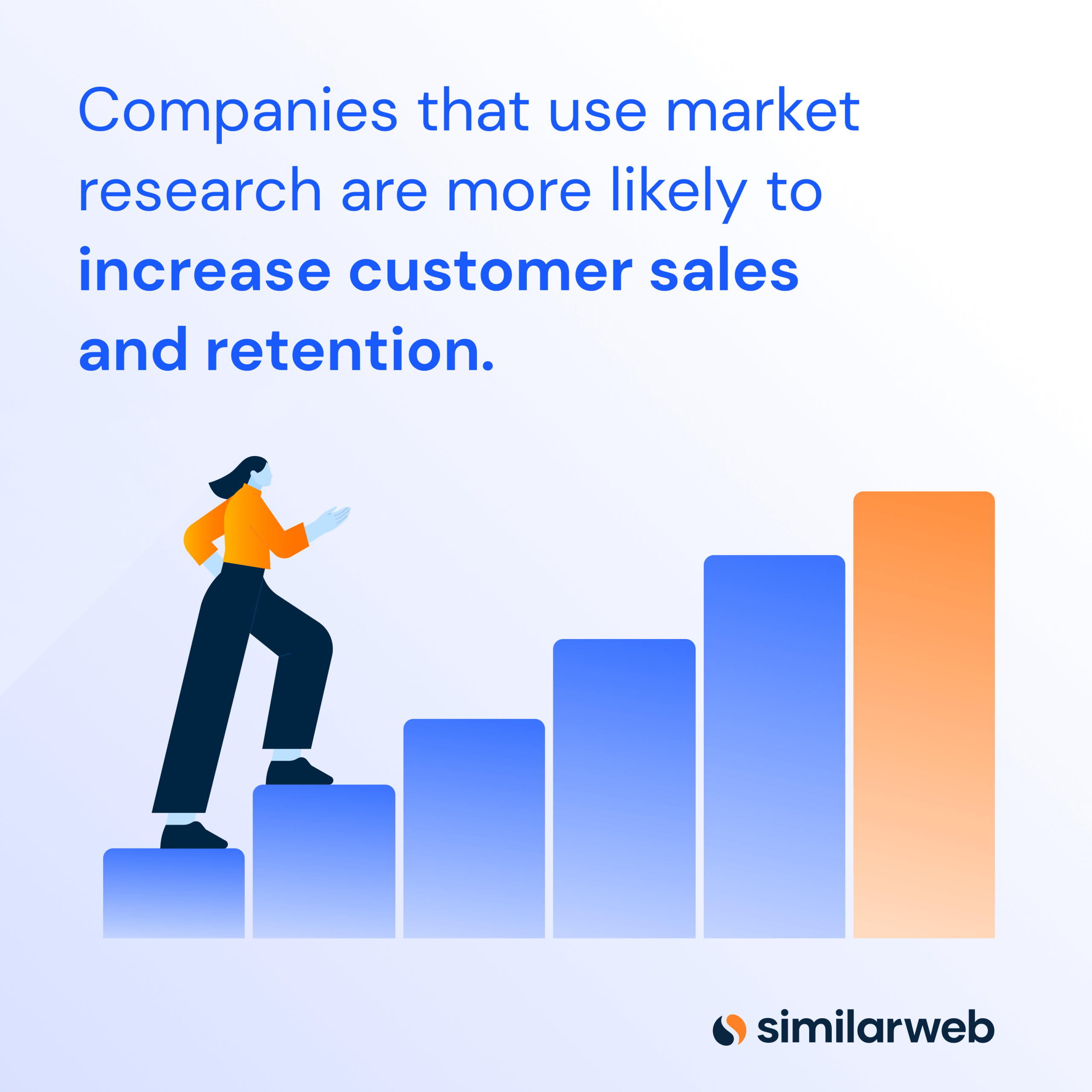
Another compelling entrant to include in the benefits of market research is its ability to unearth opportunities to grow. Whether that’s through finding new customers, markets, channels, or creative ways to go to market and get more eyes on your business. A good case in point is in the identification of new partnerships for referrals; something that often comes about when doing a competitive analysis .
The advantages of using market research for growth are ongoing, throughout the lifecycle of your business. For example:
- Reviewing competitor marketing channels could uncover key findings about a new affiliate site that’s sending a volume of traffic to their site.
- A guest post or piece of content generates a high level of interest and drives traffic to the site.
- Untapped segments for your products. Perhaps a rival is doing a better job of appealing to a different demographic. This, in turn, presents an opportunity to diversify your messaging or switch marketing channels. The same could apply to a new location or geographic region.
- New partnerships. Joint ventures between businesses that share a similar target demographic can be mutually beneficial – helping both parties reach a new ready-prepped customer base.
- Perhaps a rival is offering an add-on or upsell that you’ve failed to consider.
- You might also conduct market research surveys where customers tell you something they’d like but which you don’t yet offer.
Success story: See how AirBnB used Similarweb to uncover opportunities for growth in new markets.

8. Spot new or emerging trends
Why it matters: With how quickly consumer behaviors change and markets shift, it’s important to move with the times. Market research can help businesses stay in touch with what’s happening – something that applies to consumers, competitors, and the industry as a whole.
From changes to purchasing behaviors, new technologies, new products, or service features; researching trends and staying close to rising players in your market allows you to keep tabs on what things are attracting attention.
- Which keywords or phrases are trending in your industry?
- Is there a new player showing significant growth in your market?
- What are your rival’s highest-hitting pages?
- How are apps impacting your market – do you know which of your competitors have one, and is it successful?
- Which campaigns in your industry are working and gaining traction?
- Is there a specific asset, whitepaper, or offering that your target audience responds to?
- Are there any seasonal trends that impact your market?
- Can you see spikes in specific search terms or phrases?
While you can use digital research tools like Similarweb to quickly analyze a market, search trends, seasonal patterns, mobile app intelligence , and more – qualitative data, like surveys can be leveraged to understand customers and changing behaviors too.
Read more about how Wonderbly achieved its success here.

9. Makes it easy to evaluate and track your success
Why it matters: With the knowledge of where your business is performing well, or falling behind, you can set goals and direction more clearly. Benchmarking shows you industry standards, and maps out how rivals are doing; so you can measure relative performance.
For a business to grow, it needs to push the boundaries. The benefit of using market research here is that it shows you where and how big those boundaries are. A survey from PWC found businesses that set benchmarks achieve 45% more productivity and grow, on average 69 times faster than those that do not.
There are various types of benchmarking – each of which makes it possible to unpack and track the successes of those in your market and drill down into what success looks like for your business.
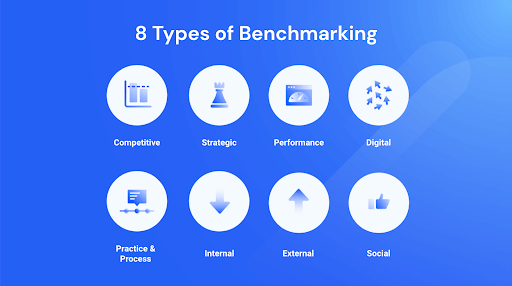
10. Inform market analysis – SWOT
Why it matters: A further benefit of doing market research is that it can show you any relative strengths, weaknesses, opportunities, and threats that exist between competitors and in a market. Greater awareness of these facts helps drive the right actions and gives clarity on areas of focus for the business. Without it, your business is susceptible to preventable mistakes.
With company and market research , you find out where opportunities and threats exist in your ecosystem. From environmental or technological factors to internal considerations; forewarned is forearmed. What’s more, a regular review of your SWOT, informed by market research, allows you to capitalize on new opportunities faster than others and keeps you in the strongest position where gaining a competitive edge is concerned.
Helpful: Read our complete guide to doing an industry SWOT analysis .
11. Inform a content marketing strategy
Why it matters: These days, the importance of having an effective, relevant, and successful content marketing strategy cannot be overstated. According to a 2020 competitive intelligence survey , companies have, on average, 29 competitors. So, regardless of your sector, in the digital world, it’s constant competition – be it for better visibility online, a higher CTR, or increased engagement.
So, how does market research benefit a business? And how can you stand out and get found online? With content marketing, of course.
An advantage of using market research to inform your content marketing strategy is that data doesn’t lie. Yes, it’s an old one but a good one. A data-driven approach to content marketing is a surefire way to uncover the most searched keywords , the right topics, and content to harness to your advantage.
You can use market research to uncover the following:
- The busiest pages on any website.
- Which topics and keywords drive the most traffic in your market?
- New topics or keyword phrases that are trending or appearing seasonably.
- Inform topic planning or theme building for a blog.
- Help you discover new opportunities for dedicated landing pages.
- What content or assets an audience engages with most.
- Which channels are the most effective to deliver content?
- The best time of day to post new content.
Success story: See how Tourism New Zealand benefits from market research ; and how they use Similarweb to research content and keywords.

Limitations of Market Research
Regardless of whether it’s for an enterprise company or an entrepreneur – time, cost, and experience are viewed as the biggest limitations of market research. But this is an outdated perception that is no longer relevant or true to life.
Here’s how things are in 2022.
- If cost is considered a limitation of market research – use secondary market research methods. Most of the time, the data can be found online, for free.
This guide to desk research shows you the best places to find secondary research data.
- Should you view time as a limitation – use software like Similarweb Digital Research Intelligence to quickly view insights in almost any market, company, or product.
If you’re on a deadline, let’s say you need to do market research for a business plan , market research tools can help you get it done in a day.
- Perhaps you feel a lack of experience is preventing you from doing market research. Most market research tools require little to no training and are highly intuitive.
Use market research templates to guide you through the key data points you need to collect.
Benefits of market research – In summary
Market research benefits any business, at any stage. From product teams to sales, customer support, marketing, operations, and management – there’s a relevant application in almost every department. However, many organizations choose only to use it for limited periods in limited areas of their business.
Similarweb Research Intelligence makes key insights accessible to all. And with the ability to impact an entire business, at almost every level, it’s a market research tool with the power to deliver immense value and insights at pace.
Stop Guessing, Start Analyzing
Get actionable insights for market research here
What are the advantages and disadvantages of market research?
The advantages of market research include things like gaining a competitive edge, data-driven decision-making, reducing expenditure, finding new markets to enter, trend-spotting, and developing growth-focused strategies. The only disadvantage is in how it’s conducted, and the time it takes to carry out the research. However, market research tools are designed to make the task of conducting research more efficient, and cost-effective.
Which goals can market research help you accomplish?
Market research can help you achieve key business objectives, such as growing your customer base, retaining a higher number of customers, improving marketing effectiveness, and increasing revenue.
How can market research benefit entrepreneurs?
The benefits of market research to entrepreneurs are plentiful. It can help startups and new businesses research the viability of a new product or service they want to bring to market. In addition, it allows entrepreneurs to accurately forecast demand , which can help both operationally and financially.

by Liz March
Digital Research Specialist
Liz March has 15 years of experience in content creation. She enjoys the outdoors, F1, and reading, and is pursuing a BSc in Environmental Science.
Related Posts

Competitor Analysis Strategy: 4 Proven Ways to Stay Ahead

What Is Product Differentiation: Types, Benefits, and Examples

New Competitors: Why Is It Important to Identify and Monitor Them?

7 Competitive Intelligence Sources Every Marketer Needs to Know

AI Glossary Terms Every Fast-Paced Marketer Needs to Know

How to Achieve Strategic Success Through Competitive Product Analysis
Wondering what similarweb can do for your business.
Give it a try or talk to our insights team — don’t worry, it’s free!
Market Research: Need, Advantages and Disadvantages
Meaning of marketing research.
Marketing research may be defined as the mechanism which helps in linking the customers, producers and several other end-user to the marketer and help in finding and communication of all required information. It is the system that leads to the collection of data, analysis of data and then interprets the required information to the users.

Need and Advantages of Market Research
Easy detection of market problems and opportunities.
The first and primary advantage of marketing research is that it give complete information about the market. It give details regarding the marketing opportunities about the product which decides its success or failure. Apart from this it also helps in identifying the competitive nature of the market, whether customers are satisfied or not, the sales level of the company and also the channel of distribution used.
Helps in Marketing Strategies Formulation
Understanding of customer needs.
Today the success of every business depends on its customers and therefore nowadays marketing activities are customer targeted. Marketing research play a very effective role in collecting the information regarding the customer wants which help in designing the product accordingly so that the customer need and wants can be satisfied easily.
Improve Sales Performance
Helps in launching of new products.
Marketing research plays a very effective role in determining the success or failure of the new product to be launched in the market. It facilitates and makes it possible for testing of the upcoming product in a market on a small scale and also help in getting the response of the customers regarding the new product. So it basically lowers the risk involved in the launching of a new product.
Helps in Evaluating The Export Potential
Support the management in decision making.
Managers at the top-level require all relevant information before making any decision. Unless and until all required relevant information is supplied to the management team their functions are useless. Marketing research plays a very effective role in the supply of all current and accurate information to the management team.
Disadvantages of Market Research
Market research takes time, research is expensive, inaccurate information.
Modern time is changing time, fashion and trends change over the night. So, market research fails to understand fashion and trends of the industry.
Related posts:
Add commercemates to your homescreen.
Advantages and Disadvantages of Market Research
Some advantages and disadvantages of market research are as follows. So let us check out its advantages and disadvantages to learn more about market research.
Some of the Advantages of Market Research are:
- Market research helps you understand your target market.
- Market research allows you to create products or services that meet your customers' needs, which leads to an increase in sales and revenue.
- Market research helps you identify your competition in the industry.
- It allows you to develop new strategies to compete more effectively, which can help you gain more market share.
- Market research helps you track industry trends.
- This will help you stay ahead of the competition and make sure your products or services are aligned with the latest trends, which helps you maintain a competitive advantage.
- Market research helps you improve overall business performance.
- This can lead to increased customer satisfaction, employee morale, and shareholder value.
Some of the Disadvantages of Market Research are:
- Market research can be expensive and time-consuming.
- It becomes difficult for small businesses to afford market research.
- Market research can be inaccurate.
- Sometimes, because of this, businesses make bad decisions about their products or services.
- It can be biassed.
- Decisions made by businesses are not in the best interest of their customers.
- Sometimes market research studies can be outdated.
- Decisions made by the business are no longer relevant to their target market.
- Market Research
The Business Scroll
- Information
Advantages and Disadvantages Of Marketing Research
If you have involved yourself in business or organizational activities, you may already know about Marketing Research, and how companies or organizations utilize it. Right? Well, it is not but a set of methods or activities in which the organization tries to collect data and make sense of it to understand its target market better. But is it all well and good? Well, not quite. There are some challenges associated with marketing research as well. And today, we are here to take a good look at the possible advantages and disadvantages of marketing research to give you a full picture of this. Alright, here we go now.

Advantages of Marketing Research
1. making smart choices.
All marketing research does is provide valuable information to businesses about what is liked by customers, what is needed, and what is being done. Thorough research will provide the data needed to identify market gaps, understand the consumer’s preferences, and put the product or service into shape to meet these needs. All in all, it enables smart decision-making processes in business, the avoidance of hitches, and an increase in the chances of success. It allows one to predict outcomes and plan smartly for the future, not just take wild guesses.
2. Targeted Marketing That Works
See, market research enables the segmentation of the audiences, thereby tailoring the marketing messages and strategies toward a particular group with a higher degree of personalization, bringing better effects upon the respective engagement and conversion rates. Use your understanding of preference and behavioral differences among the segments to pick the best marketing channels, craft relevant messages, and position your brand to connect with your target audience in a much better way.
3. Managing Risks Better
One of the benefits market research provides is the ability to manage risks in businesses. In fact, with an understanding of the turnout of consumer behavior, you can have an insight into the success chances of your products or services. Such information will only enhance the decisions one makes regarding future investments, expansion, and launching of products.
4. Staying Ahead of Competitors
Market research offers your premier measure of competitive edge, it helps you to look into industry trends, customer preferences, and competitor strategies. Staying updated on market changes will help you identify potential market spaces where your business can fit in and develop unique selling points. This action will get you an advantage over competitors so you can attract more customers.
5. Boosting Sales
In most cases, sales increase is based on market research. The market research will enable you to know exactly what the targeted customers need and prefer. And yes, understanding the trend that consumers have and their buying habits helps one form necessary strategies to maximize the market potential. This in essence means business plans that would enhance customer satisfaction, hence increasing sales. It’s pretty much that simple.
6. Building Brand Recognition
You see, knowing what kind of media and content your customers prefer lets you design targeted campaigns thus increasing the visibility of your brand. And as we all know, strong brand recognition leads to customer loyalty and can attract new customers.
7. Finding Growth Opportunities
Market research allows you to spot new growth opportunities. It simply allows you to identify all the areas where your products could be accepted. For instance, just a small improvement made in a product or any marketing approach can lead to the attraction of a whole new base of customers. This is where market research comes into play. So, yes, keeping track of the market trends keeps you innovating your business in the market spaces.
Disadvantages of Marketing Research
1. cost and time commitment.
Market research can be, you see, very expensive and take a lot of time, which is very costly for small businesses with minimal resources and tight budgets. However, it involves the gathering, analysis, and making sense process, hence requiring great time, staff, and technology usage. For small businesses, coming up with the funds that will enable comprehensive research can be hard, and it might also limit how deep and detailed the research goes.
2. Data Accuracy and Trustworthiness
The soundness of the data in market research significantly depends on ways of collecting data and the sample size. If not done properly, you can either pass wrong insights because of data with a bias or just incorrect data, which would further lead to wrong decisions. It is important, therefore, to ensure that proper methods, reliable sampling, and detailed analysis are done to prevent such unreliability.
3. Too Much Information
With so much data available from market research, businesses might find it hard to process and analyze all the information. To pull some useful insight from the data without proper tools and expertise can become an overwhelming and complex task. The missing important details and the difficulty with decision-making may have a dimension of information overflow factor since too much data can be presented.
4. Small Sample Size Problems
Samples may provide a representative pattern of a target market, but representative sampling from the complete customer population is very difficult. Hence, researchers may face difficulty in obtaining representative samples, thus causing bias in the data. For example, the subset of customers who responded to the survey may represent only a minority of the full customer base, similarly, their opinions may not be shared by the population as a whole.
5. Need for Skilled People
It is true that market research requires the right people to conduct the research and interpret the data correctly. Most companies would rather hire an external firm in order to do the research required, but this costs a lot of money. Although major companies tend to maintain in-house research teams, it would involve a lot of investment in terms of time and resource management that the majority of small-scale companies cannot afford.
6. Waiting for Results
The descriptive nature of market research itself is evidence that it is an iterative and time-consuming process. It consists of several steps such as planning, data collection, analysis, and reporting that in turn may consume time. The business may not see immediate benefits from its research efforts, which may be a disadvantage if situations call for quick decisions.
There you have it. Now you pretty much know why businesses or organizations go down the path to utilize marketing research, right? As you saw, there are always two sides to everything, and the same is true with market research.
Related Posts

5 Tips on Choosing a California Car Shipping Company

Advantages and Disadvantages of Monopoly
Leave a reply cancel reply.
Your email address will not be published. Required fields are marked *
Save my name, email, and website in this browser for the next time I comment.

- YCC MARKETER
Identifying the target audience
Identify and segment your target audience to determine the creative message that will resonate with them.
SEO - Search Engine Optimization
It is a process that helps businesses increase the quality and traffic to their website.
Content Marketing
Focus on creating meaningful, valuable, and consistent content.
Email Marketing
It is an effective campaign for businesses to reach out to customers.
Assisting businesses in promoting their products and services on search engines, YouTube, or Google partner websites.
Facebook Ads
The ad formats you're inquiring about on Facebook depend on the user's advertising goals and the type of ad they intend to run.
Paid Advertising
Is a critical element for revenue growth and brand recognition for online businesses.
Allowing businesses to efficiently and flexibly connect internal and external data systems.
Social Media Marketing
Creating content, engaging with users, analyzing results, running advertisements.
Viral Marketing
Viral marketing leverages the advantage of rapid spreading and word-of-mouth from one person to another to attract widespread attention to its message.
Analyze competitive rivals, conduct marketing, research keywords, track rankings, and inspect the website.
Web Design, UI Design, Authorization, Coding, Data Design, SEO, ...
Logo Design
Assist users and customers in easily recognizing your brand among a multitude of other brands.
Events and workshops
Providing customers with the knowledge and information they need and offering solutions to build credibility.
Business cards
As a powerful tool for communication and brand promotion, it helps you to be remembered and widely recognized.
Being a long-standing, familiar, and approachable form of communication, yet equally creative and unique.
Radio, TV ads
Radio/TV Ads has maintained its level of activity throughout this period.
Can effectively convey the message and image of the product or service to a wide audience.
- Content Marketing, Copywriting
- Advertising
- Brand Marketing
- Other Knowledge
- 08 7790 7790
What Are The 7 Disadvantages Of Marketing Research?

Conducting marketing research is frequently a crucial aspect of operating a thriving business. This process aids businesses in developing impactful sales strategies by utilizing data gathered about their target customers, products and services, as well as general trends in consumer behavior. Familiarizing yourself with the benefits of engaging in marketing research and finding ways to mitigate its drawbacks can enable you to implement a successful strategy that enhances your business practices.
In this article, we clarify the concept of marketing research, explore various advantages and disadvantages of marketing research, and outline some of its commonly used methodologies.
1. What Is Marketing Research?
Marketing research refers to the systematic and organized process of gathering, analyzing, and interpreting information about a market, including details about potential customers, competitors, products, and overall industry trends. This investigative approach is employed by businesses to gain valuable insights that inform decision-making and strategy development.
The key components of marketing research include planning the research methods, defining the target audience or markets for analysis, executing the research plan, collecting relevant data through various means (such as surveys, interviews, or data analysis), processing and interpreting the gathered information, and finally, presenting the findings in a meaningful way.
The ultimate goal of marketing research is to provide businesses with a better understanding of their market environment, enabling them to make informed decisions, create effective marketing strategies, and enhance overall business performance. Through the insights gained from marketing research, organizations can identify opportunities, assess the viability of products or services, and stay attuned to the evolving needs and preferences of their target audience.
2. What Are The Marketing Research’s Advantages?
Marketing research plays a pivotal role in shaping the success of businesses by offering a myriad of advantages that span various facets of strategic decision-making and operations. Here’s an in-depth exploration of these advantages:
1. Risk Management:
Marketing research acts as a robust tool for risk management. By delving into consumer behavior patterns, businesses can assess the viability of their products and services in the target market. This understanding empowers decision-makers to make informed choices about investments and business expansion, ultimately mitigating potential risks associated with these endeavors.
2. Sales Increase:
The foundational advantage of marketing research lies in its ability to provide deep insights into the needs and preferences of the target audience. Armed with this knowledge, businesses can tailor their offerings to align seamlessly with consumer expectations. Moreover, understanding customer behavior allows for the implementation of strategies that not only meet current demands but also capitalize on emerging trends, thereby fostering an environment conducive to increased sales.
3. Brand Recognition Improvement:
Marketing research serves as a catalyst for refining marketing and advertising strategies, leading to enhanced brand recognition. Identifying the most effective channels to reach the target audience and understanding their preferences in terms of marketing materials enables businesses to craft campaigns that resonate more deeply. This, in turn, contributes to heightened brand awareness and recall.
4. Measuring Brand Reputation:
Gaining insight into the public perception of a brand is crucial for maintaining and improving its reputation. Marketing research facilitates this by providing a comprehensive understanding of how the business is perceived by the public. Positive public opinion not only fosters customer loyalty but also attracts new customers. Additionally, by identifying areas for improvement, businesses can proactively shape a positive image.

5. Competitive Edge:
Marketing research is instrumental in gaining a competitive edge. By analyzing information about competitors, market trends, and consumer behavior, businesses can identify unique selling points, differentiate their products or services, and stay ahead of industry trends. This proactive approach positions the business as a leader in the market.
6. Product Development:
Understanding consumer needs and preferences is critical for successful product development. Marketing research guides businesses in creating offerings that align with market demands. This ensures that products are not only innovative but also well-received by the target audience, increasing the likelihood of success in the market.
7. Targeted Marketing:
Informed by the insights gathered from marketing research, businesses can target their marketing efforts more effectively. Knowledge of demographics, behaviors, and preferences of the target audience allows for the creation of tailored marketing campaigns that resonate with potential customers. This targeted approach maximizes the impact of marketing initiatives.
8. Cost Efficiency:
Marketing research contributes to cost efficiency by providing accurate and relevant information. Businesses can avoid unnecessary expenditures on initiatives that may not resonate with the target market, optimizing resource allocation and ensuring that investments are directed towards strategies with the highest potential for success.
9. Strategic Planning:
Integral to strategic planning, marketing research offers the data and insights needed for businesses to formulate and adjust their strategies. It helps in navigating dynamic market conditions, understanding consumer trends, and staying abreast of competitive landscapes. This strategic foresight positions businesses to adapt and thrive in the ever-evolving business environment.
3. What’s About The Disadvantages Of Marketing Research?
Marketing research, while invaluable for informed decision-making, comes with its set of disadvantages. Here are some drawbacks associated with marketing research along with considerations on how to address them:
1. Can be Expensive:
Conducting comprehensive market research can be a costly endeavor, particularly for smaller businesses with limited budgets. To mitigate this, businesses can consider prioritizing key research areas that align with immediate goals. Additionally, exploring cost-effective research methods, such as online surveys or leveraging existing data sources, can help manage expenses while still obtaining valuable insights.
2. Requires Significant Time Investment:
The process of planning, executing, and analyzing market research can be time-consuming. This delay in obtaining results may be a drawback, especially in fast-paced industries. To address this, businesses can adopt a phased approach, focusing on specific aspects of research at a time. This allows for quicker implementation of strategies based on initial findings, providing a more immediate impact on business practices.
3. May Only Target a Small Population:
There is a risk that market research may not fully capture the diversity of the target audience, leading to potentially biased results. To counter this, businesses should diversify their research methods and sources. Utilizing a mix of surveys, interviews, and feedback from various customer segments can provide a more comprehensive understanding of consumer preferences and behaviors.
4. Need for Skilled Personnel:
Effective market research requires individuals with the right skills and expertise. Hiring skilled professionals or external research firms can be expensive. To overcome this, businesses can explore training existing staff or utilizing automated tools for certain aspects of research. Finding a balance between in-house capabilities and outsourcing can help optimize costs while ensuring the quality of research.
5. Potential for Misinterpretation:
Interpreting research findings requires a nuanced understanding to avoid misinterpretation. Businesses may draw incorrect conclusions, leading to misguided strategies. To mitigate this risk, it is crucial to involve experienced analysts in the interpretation process. Cross-referencing findings with multiple data sources and seeking external validation can add rigor to the interpretation and ensure more accurate decision-making.

6. Influence of Bias:
The presence of bias, whether in survey design or respondent selection, can skew results and compromise the reliability of the research. Employing rigorous research methodologies, random sampling techniques, and transparent reporting of findings can help minimize bias. Additionally, being aware of potential biases and addressing them in the research design phase is essential for obtaining more objective results.
7. Limited Predictive Accuracy:
Market research provides insights based on current data, but its predictive accuracy for future trends may be limited. External factors, unforeseen events, or rapid industry changes can impact the relevance of research findings. To address this, businesses should complement traditional research with ongoing monitoring of market dynamics and stay adaptable in their strategies.
4. Frequently Asked Questions (FAQs)
4.1. is marketing research always expensive.
Marketing research can be expensive, especially for comprehensive studies. However, businesses can manage costs by prioritizing key research areas, exploring cost-effective methods, and leveraging existing data sources.
4.2. How can businesses overcome the time investment in marketing research?
To address the time-consuming nature of marketing research, businesses can adopt a phased approach, focusing on specific aspects at a time. This allows for quicker implementation of strategies based on initial findings, providing more immediate impacts.
4.3. What steps can businesses take to minimize bias in marketing research?
To minimize bias in marketing research, businesses should employ rigorous methodologies, utilize random sampling techniques, and be transparent in reporting findings. Being aware of potential biases and addressing them during the research design phase is crucial for obtaining more objective results.
- Top 3 Benefits Of Social Media
- What Are The Disadvantages Of Network Marketing?
- Content Marketing Vs Social Media Marketing
- What Are The Functions Of Marketing Communication?
- What Are The 5 D’s Of Digital Marketing?
Bài viết cùng chủ đề:

3 Disadvantages Of Video Marketing Businesses Must Know

What Are The Disadvantages Of Marketing Analytics?

The Advantages & Disadvantages Of Relationship Marketing

Exploring The 10 Disadvantages Of Global Marketing

The 7 Disadvantages Of Marketing Mix Models

10 Disadvantages Of Advertising On Social Media

Top 3 Disadvantages Of Green Marketing
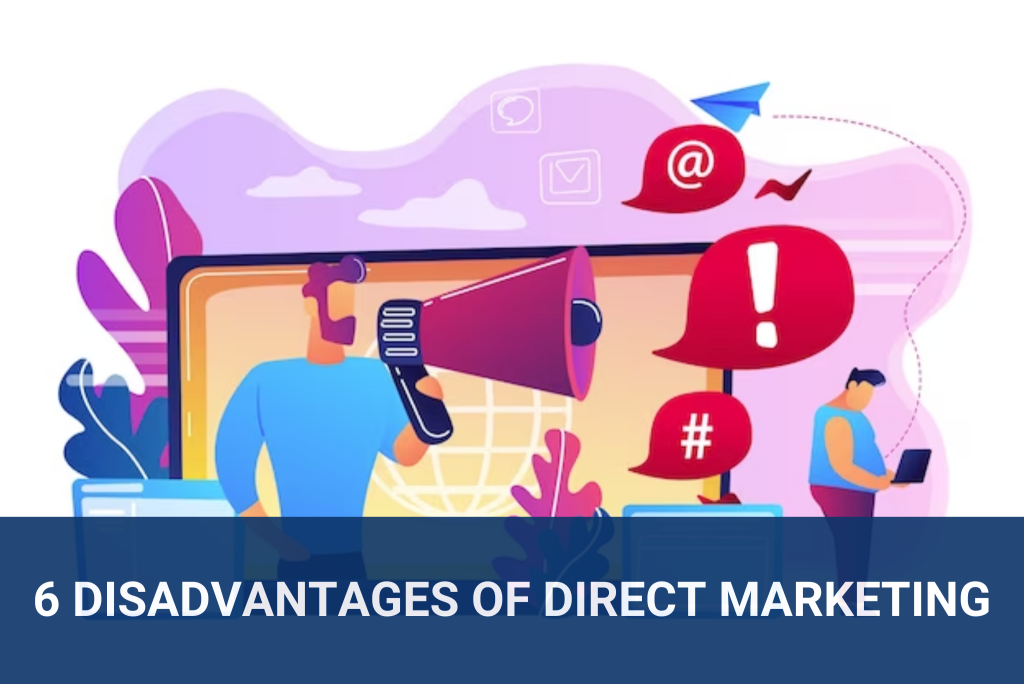
Exploring The 6 Disadvantages Of Direct Marketing
- About Tri Anh

Luôn kiên trì với định hướng Công nghệ hàng đầu là năng lực cốt lõi, TAS đã xây dựng và phát triển môi trường làm việc chuyên nghiệp với gần 100 kỹ sư và cử nhân. Trong nhiều năm liền, TAS luôn giữ tốc độ tăng trưởng cao và dự kiến tiếp tục tăng trưởng mạnh mẽ trong những năm tới.
- Tầng 4, Tòa nhà The Prince Số 17-19-21 Nguyễn Văn Trỗi, Phường 11, Quận Phú Nhuận, TPHCM
- 028 9999 8899 và 1900 272777
- [email protected]
- www.trianh.vn

Root out friction in every digital experience, super-charge conversion rates, and optimize digital self-service
Uncover insights from any interaction, deliver AI-powered agent coaching, and reduce cost to serve
Increase revenue and loyalty with real-time insights and recommendations delivered to teams on the ground
Know how your people feel and empower managers to improve employee engagement, productivity, and retention
Take action in the moments that matter most along the employee journey and drive bottom line growth
Whatever they’re are saying, wherever they’re saying it, know exactly what’s going on with your people
Get faster, richer insights with qual and quant tools that make powerful market research available to everyone
Run concept tests, pricing studies, prototyping + more with fast, powerful studies designed by UX research experts
Track your brand performance 24/7 and act quickly to respond to opportunities and challenges in your market
Explore the platform powering Experience Management
- Free Account
- Product Demos
- For Digital
- For Customer Care
- For Human Resources
- For Researchers
- Financial Services
- All Industries
Popular Use Cases
- Customer Experience
- Employee Experience
- Net Promoter Score
- Voice of Customer
- Customer Success Hub
- Product Documentation
- Training & Certification
- XM Institute
- Popular Resources
- Customer Stories
- Artificial Intelligence
Market Research
- Partnerships
- Marketplace
The annual gathering of the experience leaders at the world’s iconic brands building breakthrough business results, live in Salt Lake City.
- English/AU & NZ
- Español/Europa
- Español/América Latina
- Português Brasileiro
- REQUEST DEMO
- Experience Management
- Types of Market Research
Try Qualtrics for free
The 8 types of market research: definitions, uses and examples.
13 min read What are the different types of market research that can help you stay ahead of the curve with your marketing strategy? Understand how to use each type, and what the advantages and disadvantages are.
Market research (also called marketing research) is the action or activity of gathering information about market needs and preferences. This helps companies understand their target market — how the audience feels and behaves.
There are 8 types of market research, each with their own methods and tools:
- Primary research
- Secondary research
- Qualitative research
- Quantitative research
- Branding research
- Customer research
- Competitor research
- Product research
Let’s start our list by exploring primary and secondary research first.
Free eBook: How to rethink and reinvent market research
1. Primary research
Primary research is research that you collect yourself but going directly to the target market through a range of methods. Because it is data you create, you own the data set.
Two types of results — exploratory information (determines the nature of a problem that hasn’t yet been clearly defined) and conclusive information (carried out to solve a problem that exploratory research identified) — from participants are collected as raw data and then analyzed to gather insights from trends and comparisons.
This method is good for getting the views of a lot of people at one time, especially when time is short, but it comes with its own management issues. The interviewer must prepare a way to gather answers and record these, while engaging in conversation with many people.
Participants may be affected by the group setting, either from acquiescence bias (the desire to say yes to please the interviewer), dominance bias (stronger participants can alter the results from less dominant participants) or researcher bias (where the research leads or impacts the participant responses indirectly).
This provides a structured setting where the interviewer can listen to what’s being said and investigate further into an answer. The interviewer can also pick up on non-verbal cues from body language can help the interview understand where to deep-dive and broaden their understanding.
However, some of the same biases (acquiescence and researcher) still exit in this format. The method is time consuming to do the interviews and collect the data afterwards.
A survey is an excellent method for carrying out primary research as participants do need to be physically present with the interviewer to carry it out. The survey can be completed anywhere there is an internet connection, meaning there is flexibility for the participants to use different devices and for interviewers to contact participants in different geographical time-zones.Preparation is key, however, as the researchers must segment the market and create a list of participants to send the survey to. Hiring a panel or using existing marketing lists can help with this.
2. Secondary research
Secondary research is the use of data that has previously been collected, analysed and published (and therefore you do not own this data). An example of this for market research is:
Most information is freely available, so there are less costs associated with this kind of secondary research over primary research methods.
Secondary research can often be the preparation for primary research activities, providing a knowledge base. The information gathered may not provide the specific information to explain the results, which is where primary market research would be used to enhance understanding.
There is also a logistics planning need for a recording solution that can handle large datasets, since manual management of the volumes of information can be tricky.
Both primary and secondary research have its advantages and disadvantages, as we’ve seen, but they are best used when paired together. Combined, the data can give you the confidence to act knowing that any hypothesis you have is backed up.
Learn more about primary vs secondary research methods
The next market research types can be defined as qualitative and quantitative research types:
3. Qualitative research
Qualitative market research is the collection of primary or secondary data that is non-numerical in nature, and therefore hard to measure.
Researchers collect this market research type because it can add more depth to the data.
This kind of market research is used to summarise and infer, rather than pin-points an exact truth held by a target market. For example, qualitative market research can be done to find out a new target market’s reaction to a new product to translate the reaction into a clear explanation for the company.
4. Quantitative research
Quantitative research is the collection of primary or secondary data that is numerical in nature, and so can be collected more easily.
Researchers collect this market research type because it can provide historical benchmarking, based on facts and figures evidence.
There are a number of ways to collect this data — polls, surveys, desk research, web statistics, financial records — which can be exploratory in nature without a lot of depth at this stage.
Quantitative market research can create the foundation of knowledge needed by researchers to investigate hypotheses further through qualitative market research.
The next four variations of market research are specific to topics areas, that bring about specific information.:
5. Branding research
Branding market research assists a company to create, manage and maintain the company brand. This can relate to the tone, branding, images, values or identity of the company.
Research can be carried out through interviews, focus groups or surveys. For example, brand awareness surveys will ask your participants whether the brand is known to them and whether it is something they would be interested in buying.
Additional areas for brand research is also around brand loyalty, brand perception , brand positioning , brand value and brand identity .
The aim of research will be to understand how to know if:
- Your brand is performing in relation to other competitors
- There are areas to improve your brand activities
- There are positives to showcase to enhance your brand’s image
6. Customer research
Customer market research looks at the key influences on your target customers and how your company can make changes to encourage sales.
The aim of this research is to know your customer inside out, and continuously learn about how they interact with the company. Some themes covered by this include:
- Customer satisfaction – Exploring what keeps customers happy, as higher customer satisfaction is more likely to lead to increased customer retention.
- Customer loyalty – This looks at what experiences have happened to lead to greater customer loyalty across the customer lifecycle.
- Customer segmentation research – Discovering who the customers are, what their behaviour and preferences are and their shared characteristics.
Relevant desk research may look at historical purchase records, customer journey mapping , customer segmentation, demographics and persona templates.
Primary research, such as NPS and customer satisfaction surveys , or customer satisfaction interviews at the end of customer support calls, can also give more details.
7. Competitor research
Competitor market research is about knowing who your competition is and understanding their strengths and weaknesses, in comparison to your organization. It can also be about your competitive offering in the market, or how to approach a new market.
The aim of this research is to find ways to make your organization stand out and future planning through horizon scanning and listening to customer preferences.
For example, for competitive analysis, researchers would create a SWOT for your business and your competitors, to see how your business compares.
Primary research could interview customers about their buying preferences, while secondary sources would look at competitor’s market dominance, sales, structure and so on. With this thorough analysis, you can understand where you can change to be more competitive, and look for ideas that make you stand out.
8. Product research
Product market research is a key way to make sure your products and services are fit for launching in the market, and are performing as well as they can.
The aim of this research is to see how your product is perceived by customers, if they are providing value and working correctly. Ideas can also be formed about upgrades and future product development.
There are a number of avenues within product research:
- Product branding – Does the product brand and design attract customers in the intended way?
- Product feature testing – this can happen at various stages of development with target markets (in early development, between versions, before product launch, etc.) to check if there are positive reaction to new or improved features
- Product design thinking – what solutions would solve your customers’ current or future problems?
- Product marketing – Do the marketing messages help your product’s memorability and saleability, or can they be improved?
Primary research methods have a clear advantage in this kind of market research: Surveys can ask for rankings on the popularity or usefulness of features or conduct conjoint analysis, while in-person observation interviews (where the participant can handle a product) can be particularly useful in seeing what customers do with the product in real time.
How to use market research types in your company
In a good marketing strategy, it’s preferable to have a mixture of data across:
- Qualitative and quantitative research
- Primary and secondary research
- Your specific topic area or area of focus
With these three components, you can make sure your market strategy gives you a complete picture of your market’s operational data and experience data , — what your market does and why .
Economical experience data (O data)
This type of experience data is quantitative in nature (including operations, featuring sales data, finance data and HR data ). As it can be quantified into numerical values, it can be measured over and over, providing datasets.
There is the opportunity to use a data-driven approach to understanding the results and making predictions based on historical trends.
This sort of data can be measured more easily than emotions and feelings. But it can only tell you about past activities and what happened. It can’t tell you what will happen in the future and why things will happen — this is where X data comes in.
Emotional experience data (X data)
This type of experience data seeks to find reasons to explain emotional decisions and how brands ‘sit’ in people’s minds. In this way, this data is qualitative in nature.
Companies that have X data have a ‘mental advantage’ over other companies, as they are able to understand the perceptions of the customer, their needs and values.
When you have tangible insights on the audience’s needs, you can then take steps to meet those needs and solve problems. This mitigates the risk of an experience gap – which is what your audience expects you deliver versus what you actually deliver.
Related resources
Market intelligence 10 min read, marketing insights 11 min read, ethnographic research 11 min read, qualitative vs quantitative research 13 min read, qualitative research questions 11 min read, qualitative research design 12 min read, primary vs secondary research 14 min read, request demo.
Ready to learn more about Qualtrics?

PWW Insights and Intelligence Blog
Published: July 23, 2019

Customer buying habits, needs and motivations are in many ways measurable, not mysterious. Today’s companies have more tools than ever to ground their innovative ideas with real market information — information revealing the feasibility of a new product or service as well as its roadmap to implementation.
Understanding the importance of market intelligence is the difference between strategic, competitive organizations turning their ideas into profit and those playing a continual guessing game. Before committing substantial resources — indeed, the future of your business — into the launch of a new product, service or branding endeavor, you must conduct intensive research into how customers will respond to that endeavor. Targeted market intelligence is how.
What Is Market Research?
Simply put, market research is when an organization identifies a specific set of information or questions they need to have answered to implement a successful and profitable business change.
This is a broad definition, and purposefully so. Market research is an expansive activity with numerous methodologies that can help a business do everything from launching new product packaging to picking music for commercials to converting customers away from the competition. Yet the purpose of performing market research is the same — to research and analyze the variables of a target goal or question, then create a business strategy informed by findings that’ll pave the way to that goal’s realization.
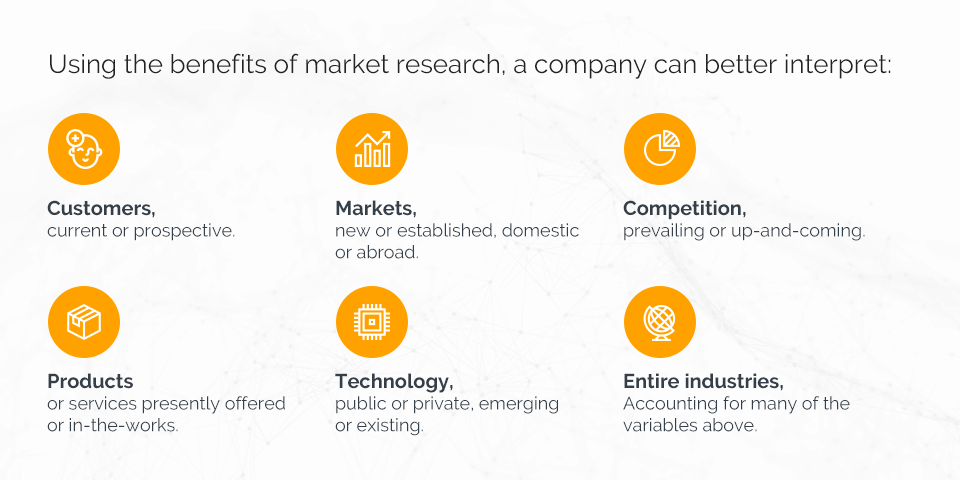
Using the benefits of market research, a company can better interpret:
- Customers , current or prospective.
- Markets , new or established, domestic or abroad.
- Competition , prevailing or up-and-coming.
- Products or services presently offered or in-the-works.
- Technology , public or private, emerging or existing.
- Entire industries , accounting for many of the variables above.
What Goes Into Thorough Market Research?

While the goals behind conducting market research vary for each enterprise, its overall process holds the same core steps:
- Outline the enterprise goals : Every good market research initiative begins by identifying your market research needs and goals . Organizations need to determine what information they truly require to answer a question, clarify indecision or better understand a business concept. Once compiled, that information helps build the roadmap for your market research methodologies.
- Bring in stakeholders : Identify the individuals and teams who have an interest in achieving a specific enterprise goal. Consider stakeholders those conducting the research as well as those who must receive, interpret and implement market research findings within their own domains to achieve that enterprise goal.
- Review budget allotment : Budget allowance influences what kinds of market intelligence methodologies can be conducted practically, as well as the length of analysis and additional resources or outside consultants to bring onboard.
- Identify necessary facilities and additional resources : Can market analysis be performed completely in-house, using internal information like company sales reports or accounting ledgers? Will surveys need to be drafted and disseminated? Do actual customers or the general public need to be brought in for a live focus group? Account for all facility and technical resources as early as possible.
- Conduct the research : Perform the market research methodology that gives the best chance to extract relevant, goal-solving information.
- Interpret results to make a business decision : Market research can unearth reams of quantitative and qualitative data your key stakeholders then chisel into actionable, effective enterprise solutions, levering market intelligence for its true function — better-run businesses.
What Industries Use Thorough Market Research?

It’s no exaggeration to say in today’s commercial world, nearly all industries deploy thorough market intelligence to their advantage. However, a handful of sectors see strategic gains in conducting continual benchmarking, monitorization and market entry or defense research:
1. Consumer Goods
From shoes to showerheads, smartphones to hair-styling products, everyday commercial goods make the consumer’s life tick. Retailers glean the vast benefits of market research to assist with new product testing, development, consumer segmentation, distribution benchmarking and more retail-centered market strategies .
2. Pharmaceuticals
The pharmaceutical industry is a heavily regulated, cost-competitive sector that undergoes near-constant evolution. Pharmaceutical companies keep pace by performing keen healthcare market intelligence studies into operational profitability and cost advantages, consumer beliefs, new treatment commercialization plans, current treatment and drug therapy development and by maintaining competitor profiles.
3. Technology
Our lives are increasingly dependent upon and tethered to software and hardware. This Internet of Things (IoT) reality drives the hyper-competitive tech industry to perform fluid research and development (R&D) initiatives, conduct pricing analyses, monitor product warranty and servicing metrics, understand their brand’s public perception, optimize consumer retention and user experience (UX) and much more.
4. Banking and Finance
Advances in financial technology, also called fintech, and other industry disruptors have catapulted financial service companies into a new era of competitive undertakings. Differentiation in banking and finance has never been more essential, with market research and intelligence providing service and operational advantages for retail and corporate banks, lending institutions, insurance providers, investment firms and more.
5. Manufacturing
Industrial and commercial manufacturing companies navigate an increasingly complex and profit-volatile industry. From performing threat assessments on domestic and international competition and profiling changing consumer material tastes to undergoing supply chain, production and distribution analyses, the disadvantages of not doing proper market research could spell life or death for those in this industry.
From petroleum-based oil and natural gas to the rapidly advancing renewables market, the energy sector carries both traditional and alternative offerings set to define how future societies run. Energy companies have a long list of reasons for conducting marketing research, beginning with understanding shifting consumer energy attitudes and tastes to developing profitable go-to-market strategies, fuel sourcing supply chains, brand and product evolution and much more.
7. Food and Beverages
The sheer variety of packaged foods and beverages available to today’s consumer alone warrants thorough market research. From individual convenience stores conducting layout analyses to see which shelving designs boost average basket sales to the beverage and snack manufacturers expanding their own consumer taste R&D studies, there’s no shortage of opportunities for market intelligence in the food industry.
Primary Versus Secondary Market Intelligence

While there are many market research methodologies for organizations to adopt, there are only two general categories those methods fall into — primary research or secondary research.
1. Primary Market Intelligence
Primary market research is studies or reports created by your organization, for your organization, using propriety information and specific research criteria aimed at addressing a focused business goal.
Proprietary information is the basis for overall analysis, allowing an organization to get precise, pinpointed answers on products, services, sales cycles, profitability and more. Examples of primary market intelligence research include:
- A mining equipment manufacturer conducting efficiency and output assessments on all its plants.
- An outdoor apparel label reviewing quarterly sales reports to identify the most successful product lines.
- An all-natural cosmetics company determining which new logo idea is most appealing to its customers.
2. Secondary Market Intelligence
As the name suggests, secondary research is non-proprietary, non-customized pieces of broad market research and industry analysis. It focuses not on a particular business’ products, services or brand perceptions, but instead on the larger trends and variables affecting an industry.
Trade associations, the government and third-party groups interested in industry activities are most often responsible for publishing secondary market research. Common secondary market intelligence examples might include:
- A report on Millennial smartphone browsing habits published by the Mobile Marketing Association.
- Public transportation ridership data produced by the U.S. Bureau of Transportation Statistics.
- Data on the top leisure spending habits in your state according to income bracket, published by the Pew Research Center.
What Are the Types of Market Research Intelligence?

Organizations have many options at their disposal to conduct thorough primary and secondary market research.
1. Consumer Brand Awareness Research
Brand awareness encompasses how widely recognizable your business is to target customers, as well as prospective consumers and desired markets. It’s an important tenet of a business’ overall marketing strategy and business growth likelihood since poor brand awareness correlates with smaller market shares and diminished growth outcomes .
Consumer brand awareness research identifies variables like:
- Brand identity : The words, phrases, descriptors and associations the general public ties to your company, positive or negative.
- Brand recognition : How quickly a consumer matches branded collateral — logos, color schemes, audio branding sounds, and more — to your business.
- Brand recall : The ability for the average consumer to name your products, business or collateral when discussing your industry.
2. Market Segmentation
Customer and market segmentation allow organizations to understand their customers better — plus identify segments with higher profit potential. Surveys and interviews with current and prospective consumers give insights into the values, habits, preferences, likes and dislikes of target populations, enabling an organization to morph their products or services to meet these motivations.
3. Research and Development (R&D)
R&D market research encompasses all the ways an organization tweaks and tailors their products according to market segmentation demands, cost-profit calculations and their overall brand identity. It allows a company to produce a superior product at a superior price point without sacrificing basic, profitable operational efficiencies.
R&D market research incorporates activities like:
- Packaging design and testing
- Product features and enhancements
- Actual product testing
- Product launch or re-launch improvements
- Post-launch product support
4. Advertising and Marketing Intelligence

Marketing research is pivotal to understanding what advertising channels, messages and platforms are your strongest, meaning they connect with audiences, generate the most leads, nurture the most loyalty and imbue the most brand identity. Advertising market intelligence lets you create campaigns and marketing tactics with proven, positive customer impact, saving significant time and resources.
5. Satisfaction and Loyalty Testing
Satisfaction and consumer loyalty are coveted — and measurable — markers that a consumer will return to your brand, time and time again. Loyal customers are also more likely to recommend your products or services to others, browse your website, make repeat purchases, interact with your social accounts, give positive online reviews and be open to cross or up-selling opportunities.
You can measure customer satisfaction and loyalty using surveys, focus groups and interviews identifying:
- Brand trust : How much consumers view your company as authentic, admirable, socially conscious and committed to its customers.
- Brand messaging : Are current advertising and marketing methods imbuing customers with the “personality” you want to be known for?
- Product or service appeal : Understanding what’s most important to the satisfaction of your customer — be that price, convenience, status, trendiness, safety or something entirely unique.
6. Market Pricing
Successful market pricing allows you to pinpoint how much target consumer segments would pay for a particular product with particular features. It involves a complementary blend of both primary and secondary research methods:
- Primary market-pricing intelligence gleans what aspects of your products, services or branding customers respond best to, and will, therefore, pay a premium to experience.
- Secondary market-pricing intelligence reveals what industry competitors charge for similar products or services, as well as generalized shifts in consumer tastes and values which inform product pricing. For example, the growing desire to be an eco-conscious consumer means certain segments will pay a dollar or two more for “green” goods compared to cheaper, non-green merchandise.
Top Marketing Research Methods for Businesses

The way an enterprise chooses to collect information, conduct research and compile data is known as its marketing research methodology. What type of methodology an organization adopts — as well as if it’s primary or secondary leaning — is a direct reflection of the strategic business decisions it wants insights into.
Organizations can conduct their market data collection using any of the following approaches:
1. Experimental Studies
Controlled experiments let researchers manipulate specific product, service, advertising or environmental variables, then measure how those manipulations affect the whole. This approach works particularly well during product R&D or pre-launch preparations and for advertising and market intelligence research.
For example, researchers can present multiple versions a piece of software or variations of a commercial, then let test participants fill out response surveys. Overall, measuring such variable differences in controlled settings helps signal what works well for a product or brand and what doesn’t.
Experimental market research can be done in two settings:
- Laboratory studies : Laboratory-tested market intelligence allows researchers to control nearly all product and environmental variables, therefore unearthing more quantitative, consistent findings. It works particularly well for commercial products, technology, food and beverages and is most often done with the assistance of a third-party research firm.
- Field studies : Field-testing market research takes place in real-life environments, such as in a retail store, manufacturing plant or an entire city. It’s great to test actual market conditions and feasibility of certain products, services or branding mechanisms, as well as experiment with price points and buyer intent before applying to larger settings.
2. Focus Groups
Focus groups are large, group interviews made up of pre-screened, volunteer consumers in target segments or relevant subject matter experts. Focus groups are a primary market research methodology ideal for extracting subjective or qualitative information about a brand or good — information that cannot be replicated in a trial-and-error lab setting.
Focus groups can be split into two categories:
- Quantitative-centered focus groups , where group members receive pre-written surveys or tests with standardized, numeric-based questions evaluated together after completing.
- Qualitative-centered focus groups , where group members are asked open-ended questions or given open-ended tasks for researchers to glean more subjective reactions and insights.
3. Primary Interviews
Primary interviews are one-on-one interviews conducted directly between researchers and a pre-screened candidate online, over the phone or face-to-face. That candidate has been selected for their congruence to your target consumer segments because they fit a market demographic or because they’re a subject matter expert who can lend interesting insights on market criteria.
4. UX Groups
User-experience groups are a subcategory of focus groups relevant for software, technology and some physical products. Members of UX groups are tasked with actually using a new product, often during the R&D phase. Using a mix of surveys, journals, individual and group interviews, researchers amass quantitative and qualitative data on the appeal of a product, from its user-friendliness to its actual task-enhancing ratings.
5. Benchmarking

Market intelligence benchmarking allows an organization to identify and measure targeted key performance indicators (KPIs) within their operations, then compare those to competitors. Nearly all businesses benchmark, but not all leverage benchmarked data into formal business growth plans to account for:
- Organizational structure comparisons
- Improved supply chain management
- Enhanced retail experiences and initiatives
- Refreshed sales strategies
- Overall cost reductions and maximized profitability
6. Internal Analyses
Completely internal market research turns a company’s attention inwards. It elevates static enterprise information into compelling and actionable ideas, ensuring your organization doesn’t collect data for the sake of collecting data — it wields it as a tool for innovation.
Internal data analyses can uncover trends and insights from:
- Product line data
- Accounting and financial planning spreadsheets
- Website and social media platform traffic
- Content-marketing analytics
7. External Analyses
Pure external analysis lets businesses understand the broader context behind an industry question or concern. Using only government publications, industry trade research and commercially available data, external analysis can review topics like:
- Regional or national market conditions, for risk-adjusted entry and defense.
- Emerging industry technology.
- Growing consumer trends, fears or behaviors related to their industry.
- Overall market or industry threats and disruptions.
Disadvantages of Not Doing Market Research

The importance of conducting market research goes beyond a few feel-good assessments. Market intelligence hands organizations a blueprint for creating the best version of themselves. Market research offers many benefits, and neglecting to do market research can hurt your company in several ways:
1. Never Learning Your Competitive Advantages
Businesses that know their strengths, capabilities and pain points are far better equipped to make strength-maximizing, risk-mitigating business decisions. It’s a form of self-awareness critical to creating strategic growth outcomes .
Market intelligence allows organizations to craft nearly every operation to their competitive advantage. It spotlights what processes or activities are currently on-brand, lean and successful while also identifying things your competitors might be doing you can integrate, siphoning customers, expanding your market share and furthering your competitive momentum along the way.
2. Forgoing Customer-Centric Marketing Models
Market intelligence lets organizations know what makes their customers tick. When done consistently, thorough customer and market segmentation become both an art and a science. Through customer-focused market research using focus groups, surveys, interviews, field studies and more, companies can glean new sales strategies, devise more impactful brand messages and advertisements and overall make keener investments into customer-facing platforms and touch points.
3. Increasing Strategic, Operational Risk
Instead of making decisions in the dark, performing market research grounds business decisions and reduces the chance of plans going awry. Organizations have precise insights into what works and what doesn’t, both internally and externally. Backed by this information, they can tweak processes and allocate resources to:
- Improve budget cycles
- Enhance decision-making ROI
- Speed up product or service times to market
- Develop stronger market entry or product launch strategies
4. Can’t Make Data-Backed Enterprise Decisions
Just because something has a number to it doesn’t mean it’s infallible. Yet data-backed enterprise decisions inspire more confidence since they’re composed of real-world, reliable data. Stakeholders, therefore, have more confidence in making business decisions, decisions which:
- Contain more preemptive, not reactive, plans, patterns and activities.
- Better predict the competition’s motivations and behaviors.
- Better predict customer’s motivations and behaviors.
- Mitigate risk and respond more effectively when market anomalies do occur.
5. Leaves Business Stones Unturned
It’s impossible for businesses to control every variable across all the inevitable changes in consumer expectations, technology, facilities, product and service lines, marketplace health and general society. With market research, though, business leaders can rest assured their organizations have done due diligence, keeping a pulse on these things as they happen — not after the fact.
What’s more, this “pulse” is scientifically validated, analyzed and put into effect in equally measurable installments — no cut corners, no sloppy implementation. Simply a well-run business crossing and T’s and dotting I’s before making significant strategic moves.
Gain the Advantages of Thorough Market Research With Proactive Worldwide
When an organization seeks new ways to be the best version of itself, Proactive Worldwide provides answers through globally renowned market strategy and analysis services committed to your exact goals.
Proactive Worldwide provides enterprise intelligence services and consulting in three core domains:
- Intelligence-Based Strategic Planning Services
- Competitive and Market Intelligence Consulting
- Customer Insights Research and Reports
Contact us today to see how intelligent market research can propel your organization to be where it should.

What can we help you achieve?
Get in touch with our market intelligence company today to start planning for the future of your organization.


What is marketing research? Definition and examples
Marketing Research involves systematically collecting data about consumers, rivals, and other entities. That data is analyzed to gain a better understanding of consumers’ needs and other features of the market. Marketing people then summarize the data and conclusions in a report. The report helps senior managers and business owners make informed decisions regarding future plans and strategies.
Effective marketing research also aids in identifying potential new markets or customer segments, allowing companies to expand their reach and diversify their customer base.
Moreover, marketing research continuously evolves to adapt to emerging trends and technologies, ensuring that businesses stay competitive in rapidly changing markets.
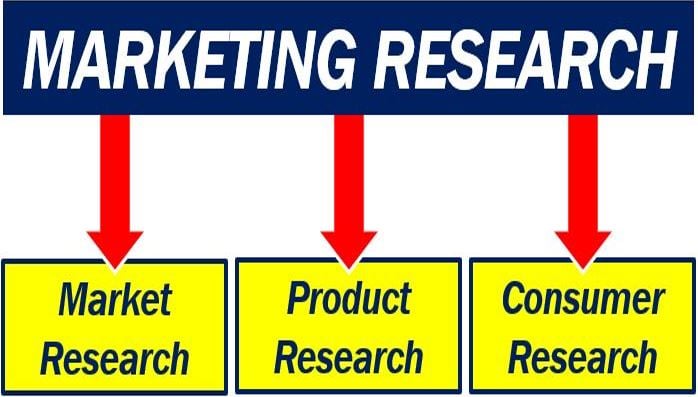
“Marketing research is the systematic gathering, recording, and analysis of qualitative and quantitative data about issues relating to marketing products and services. The goal is to identify and assess how changing elements of the marketing mix impacts customer behavior.”
Three main types of marketing research
Marketing research generally consists of three main types of research: 1. Market research . 2. Product researc h. 3. Consumer research .
Market research

Market research is a study of the market, specifically who purchase a product, why they buy it, how competitors behave, and how something is sold.
It is an organized effort to gather and analyze data about target markets. The following quote comes from our article that defines market research:
“We often use the term with the same meaning as marketing research. However, marketing research concentrates on the marketing processes, while market research is about the market in general.”
Product research
Product research involves identifying a need or want and the characteristics of the product or service that will satisfy it. In other words, if consumers have a desire or want, what features or benefits of your product satisfies them and to what extent.
This type of research helps companies determine what consumers really want or need. They can then tailor their goods or services to match those consumer wants and needs.
According to mnbaskool.com:
“Product research is the marketing research that provides information on the desired characteristics of a product or service . Product research helps companies to understand what the customers really want, so that the product can be tailored to match the needs of the customer. This research can help to refine new product ideas.”
Consumer research
Consumer research is all about identifying consumer preferences, motivations, and purchasing behaviors. Specifically, the consumers that the company is focusing on; in other words, the target consumer.
Many marketing experts say that consumer research is part of market research. Marketers gather information through published sources, direct observation, face-to-face interviews, and mail surveys. Telephone interviews are also popular.
Who performs this type of research?
Some companies perform the research themselves while others hire third-party experts or consultants.
Hiring a consulting firm has both advantages and disadvantages. The main advantage is that consultants are marketing research experts. They probably have more experience and training than employees within the company.
The main disadvantage is that they may not understand some the products or services as well as company employees do. The same may also apply to customers and potential customers.
Compound phrases with ‘marketing research’
A compound phrase consists of two or more words. In business and marketing English, there are many compound phrases with the term ‘marketing research’ in them. Let’s have a look at the give most common ones:
Marketing Research Techniques
Refers to the specific methods and tools used in conducting marketing research. As in:
“The company employed various marketing research techniques, such as surveys and focus groups, to understand consumer preferences.”
Marketing Research Analysis
The process of examining and interpreting data collected through marketing research. For example:
“After conducting surveys, the marketing research analysis revealed a growing demand for eco-friendly products among consumers.”
Marketing Research Ethics
Principles and standards guiding the conduct of marketing research to ensure honesty, fairness, and responsibility. For instance:
“Adhering to marketing research ethics, the firm ensured all participant data was kept confidential and used solely for research purposes.”
Global Marketing Research
Research conducted to understand marketing dynamics, consumer behavior, and trends in international markets. As in:
“In their global marketing research, the company discovered significant cultural differences in consumer behavior across different regions, impacting their product strategy.”
Digital Marketing Research
Involves collecting and analyzing data related to digital marketing efforts, such as online consumer behavior, social media trends, and digital advertising effectiveness. For example:
“The digital marketing research showed that the company’s target audience predominantly engaged with their brand through social media platforms, leading to an increased focus on social media advertising.”
Vide – What is Marketing Research?
This video presentation, from our YouTube partner channel – Marketing Business Network , explains what a ‘Marketing Research’ is using simple and easy-to-understand language and examples.
Share this:
- Renewable Energy
- Artificial Intelligence
- 3D Printing
- Financial Glossary
Last Updated: October 14, 2021
Estimated reading time: 1 minute
Marketing Research

Table of Content
Marketing research process, benefits of marketing research, disadvantages of marketing research.
Want to know your customers better? Start with marketing research.
Marketing research is the compass that guides businesses through the ever-changing landscape of consumer preferences and market trends. By diving deep into customers’ minds, companies uncover valuable insights to inform product development, advertising strategies , and customer engagement. Imagine launching a new product without understanding what your audience truly wants – marketing research helps you avoid that gamble, ensuring your efforts resonate with the right people at the right time.
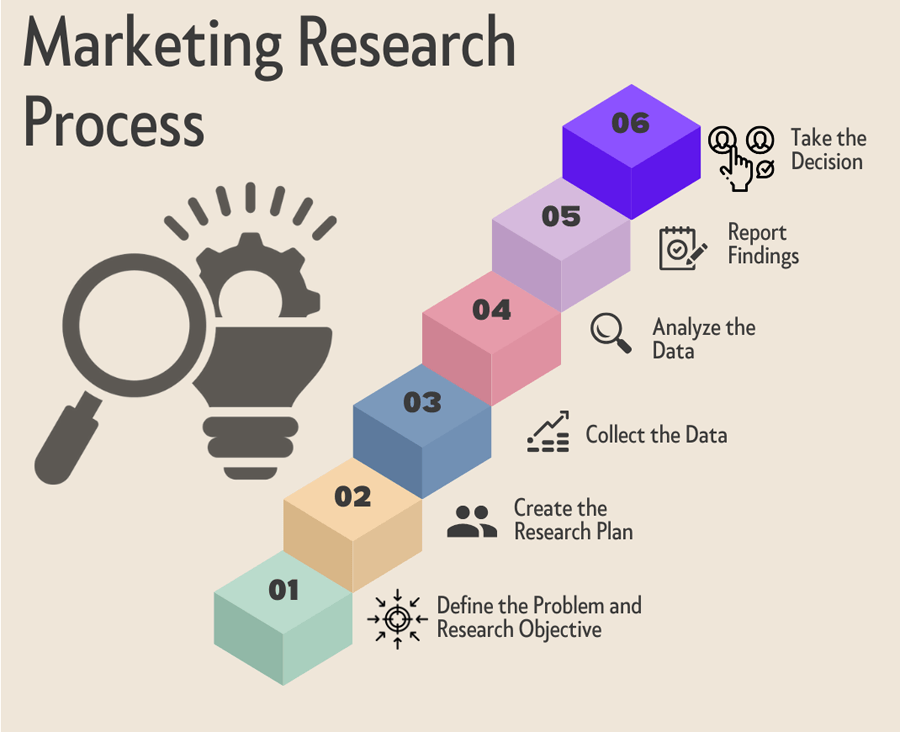
Define the Problem and Research Objective
The most crucial step in any marketing research project is determining the problem. Before conducting research or collecting data, you need to understand what you want to learn. Identifying the root problem or opportunity helps determine the necessary information and how to obtain it. For example, you might explore how to address a loss in market share or how to launch a product for a specific demographic.
Create the Research Plan
Marketing managers must decide on data sources, research methods, research instruments, sampling methods, contact methods, and research tools to design an effective research program.
- Data Sources : Researchers can collect secondary data, primary data, or both. Secondary data already exists and was collected for another purpose, while primary data is gathered first-hand for a specific project.
- Research Methods : Five main methods to collect primary data include observation, focus groups, surveys, behavioral data, and experiments.
- Research Instruments : Common instruments include questionnaires, qualitative measures, and technological devices. Questionnaires, with both closed-end and open-ended questions, are particularly flexible and useful.
- Sample Plan : This involves deciding on the sampling unit, sample size, and sampling procedure to ensure the sample is representative and reliable.
- Contact Methods : Respondents can be reached via email, phone, in person, or online.
Collect the Data
Data collection is usually the most costly and error-prone phase. Respondents might be unavailable, uncooperative, or dishonest, requiring follow-up or replacement.
Analyze the Data
Researchers tabulate data and create summary measures. They calculate averages, dispersions, and use advanced statistical techniques to test hypotheses and strengthen conclusions.
Report Findings
Researchers present their findings, often in a consultative role, translating data into insights and recommendations. Clear, persuasive reports are crucial for effective decision-making.
Take the Decision
Based on the research report, top management makes informed marketing decisions. If unsatisfied with the report, they might discard it and start a new research project.
Identify Marketing Opportunities
Marketing research allows companies to identify gaps in the market, understand consumer needs, and adapt products accordingly. This proactive approach helps in tailoring products or services to meet market demands, thereby increasing the chances of success.
Understand Customer Preferences
By continuously tracking consumer behavior, preferences, and feedback, companies can stay attuned to what their customers want. This knowledge enables businesses to create products and services that align with consumer expectations, fostering customer loyalty and satisfaction.
Inform Marketing Strategies
Data-driven insights from marketing research provide a solid foundation for developing marketing strategies. Companies can create targeted campaigns, choose appropriate marketing channels, and allocate budgets more effectively, leading to better outcomes and higher returns on investment.
Reduce Marketing Risk
Conducting thorough research helps companies avoid costly mistakes. By understanding market conditions, competition, and consumer preferences, businesses can make smart decisions about product launches, market entries, and other strategic moves, minimizing the risk of failure.
Calculate Market Size
Accurate assessment of the market size allows businesses to understand the potential demand for their products or services. This helps in setting realistic sales targets, planning production, and ensuring that resources are allocated efficiently.
Support New Product Launches
Marketing research plays a critical role in testing new products on a smaller scale before a full-scale launch. Feedback gathered during this phase can be used to make necessary adjustments, ensuring that the product meets consumer needs and expectations.
Monitor Market Trends
Keeping an eye on industry trends helps businesses stay ahead of the competition. By identifying emerging trends early, companies can innovate and adapt their offerings to meet changing market conditions, gaining a competitive edge.
Measure Company Position
Marketing research provides valuable insights into a company’s market position and reputation. This information helps management understand how their brand is perceived, identify areas for improvement, and develop strategies to enhance their market presence.
Marketing research can be expensive, especially if it involves hiring external agencies or conducting large-scale studies. Costs can include survey design, data collection, analysis, and reporting. For smaller companies with limited budgets, this can be a significant barrier.
Time-Consuming
Conducting comprehensive marketing research takes time. Designing studies, collecting data, analyzing results, and compiling reports can be a lengthy process. In fast-paced markets, this time investment might delay decision-making and implementation.
Inaccurate Information
Poorly designed research can lead to biased or inaccurate results. Issues such as leading questions, unrepresentative samples, or respondent dishonesty can skew data, leading to incorrect conclusions and misguided decisions.
Rapid Market Changes
The dynamic nature of markets means that research findings can quickly become outdated. What is relevant today may not apply tomorrow, making it challenging to rely solely on past data for future decisions.
Biased Results
Human involvement in research introduces the potential for bias. Researchers’ personal values, attitudes, and prejudices can influence the design and interpretation of studies. Additionally, respondents’ socio-cultural factors can affect their answers, leading to subjective results.
Marketing research is essential for businesses to determine product demand, viability, and performance in the real world. By using primary and secondary data, companies gain unique insights that drive their success and growth. Research and development (R&D) are crucial components of this process, ensuring that companies stay competitive and meet market needs effectively.
Related Articles:
Blog influencers.
In today’s digital world, blog influencers have emerged as powerful voices shaping opinions and trends. They design engaging content that […]
read more...
Advertising Appeal
Advertising appeals are communication tactics used by marketing and advertising professionals to catch people’s interest and convince them to purchase. […]
YouTube Video SEO
Your video deserves an audience. Let’s make it happen. YouTube isn’t just a platform for watching videos; it’s the world’s […]
Leave a Reply Cancel reply
Your email address will not be published. Required fields are marked *
Save my name, email, and website in this browser for the next time I comment.
Most Viewed Blogs
- Evolution of Marketing Concept
- Secondary Brand Associations
- Digital Marketing Tools
- Factors Affecting Attention and Its Type
- Augmented Marketing
Recent Blogs
- Key Participants in IPOs
- Consumer Social Class
- Causes and Effects of Anxiety
- Antisocial Personality Disorder
- Factors Affecting Memory
Types of market research: Methods and examples

- Share on Facebook
- Share on Twitter
- Share on LinkedIn

Here at GWI we publish a steady stream of blogs, reports, and other resources that dig deep into specific market research topics.
But what about the folks who’d appreciate a more general overview of market research that explains the big picture? Don’t they deserve some love too?
Of course they do. That’s why we’ve created this overview guide focusing on types of market research and examples. With so many market research companies to choose from, having a solid general understanding of how this sector works is essential for any brand or business that wants to pick the right market research partner.
So with that in mind, let’s start at the very beginning and get clear on…
Market research definition
At the risk of stating the slightly obvious, market research is the gathering and analyzing of data on consumers, competitors, distributors, and markets. As such it’s not quite the same as consumer research , but there’s significant overlap.
Market research matters because it can help you take the guesswork out of getting through to audiences. By studying consumers and gathering information on their likes, dislikes, and so on, brands can make evidence-based decisions instead of relying on instinct or experience.
What is market research?
Market research is the organized gathering of information about target markets and consumers’ needs and preferences. It’s an important component of business strategy and a major factor in maintaining competitiveness.
If a business wants to know – really know – what sort of products or services consumers want to buy, along with where, when, and how those products and services should be marketed, it just makes sense to ask the prospective audience.
Without the certainty that market research brings, a business is basically hoping for the best. And while we salute their optimism, that’s not exactly a reliable strategy for success.
What are the types of market research?
Primary research .
Primary research is a type of market research you either conduct yourself or hire someone to do on your behalf.
A classic example of primary research involves going directly to a source – typically customers or prospective customers in your target market – to ask questions and gather information about a product or service. Interviewing methods include in-person, online surveys, phone calls, and focus groups.
The big advantage of primary research is that it’s directly focused on your objectives, so the outcome will be conclusive, detailed insights – particularly into customer views – making it the gold standard.
The disadvantages are it can be time-consuming and potentially costly, plus there’s a risk of survey bias creeping in, in the sense that research samples may not be representative of the wider group.
Secondary research
Primary market research means you collect the data your business needs, whereas the types of market research known as secondary market research use information that’s already been gathered for other purposes but can still be valuable. Examples include published market studies, white papers, analyst reports, customer emails, and customer surveys/feedback.
For many small businesses with limited budgets, secondary market research is their first choice because it’s easier to acquire and far more affordable than primary research.
Secondary research can still answer specific business questions, but with limitations. The data collected from that audience may not match your targeted audience exactly, resulting in skewed outcomes.
A big benefit of secondary market research is helping lay the groundwork and get you ready to carry out primary market research by making sure you’re focused on what matters most.

Qualitative research
Qualitative research is one of the two fundamental types of market research. Qualitative research is about people and their opinions. Typically conducted by asking questions either one-on-one or in groups, qualitative research can help you define problems and learn about customers’ opinions, values, and beliefs.
Classic examples of qualitative research are long-answer questions like “Why do you think this product is better than competitive products? Why do you think it’s not?”, or “How would you improve this new service to make it more appealing?”
Because qualitative research generally involves smaller sample sizes than its close cousin quantitative research, it gives you an anecdotal overview of your subject, rather than highly detailed information that can help predict future performance.
Qualitative research is particularly useful if you’re developing a new product, service, website or ad campaign and want to get some feedback before you commit a large budget to it.
Quantitative research
If qualitative research is all about opinions, quantitative research is all about numbers, using math to uncover insights about your audience.
Typical quantitative research questions are things like, “What’s the market size for this product?” or “How long are visitors staying on this website?”. Clearly the answers to both will be numerical.
Quantitative research usually involves questionnaires. Respondents are asked to complete the survey, which marketers use to understand consumer needs, and create strategies and marketing plans.
Importantly, because quantitative research is math-based, it’s statistically valid, which means you’re in a good position to use it to predict the future direction of your business.
Consumer research
As its name implies, consumer research gathers information about consumers’ lifestyles, behaviors, needs and preferences, usually in relation to a particular product or service. It can include both quantitative and qualitative studies.
Examples of consumer research in action include finding ways to improve consumer perception of a product, or creating buyer personas and market segments, which help you successfully market your product to different types of customers.
Understanding consumer trends , driven by consumer research, helps businesses understand customer psychology and create detailed purchasing behavior profiles. The result helps brands improve their products and services by making them more customer-centric, increasing customer satisfaction, and boosting bottom line in the process.
Product research
Product research gives a new product (or indeed service, we don’t judge) its best chance of success, or helps an existing product improve or increase market share.
It’s common sense: by finding out what consumers want and adjusting your offering accordingly, you gain a competitive edge. It can be the difference between a product being a roaring success or an abject failure.
Examples of product research include finding ways to develop goods with a higher value, or identifying exactly where innovation effort should be focused.
Product research goes hand-in-hand with other strands of market research, helping you make informed decisions about what consumers want, and what you can offer them.
Brand research
Brand research is the process of gathering feedback from your current, prospective, and even past customers to understand how your brand is perceived by the market.
It covers things like brand awareness, brand perceptions, customer advocacy, advertising effectiveness, purchase channels, audience profiling, and whether or not the brand is a top consideration for consumers.
The result helps take the guesswork out of your messaging and brand strategy. Like all types of market research, it gives marketing leaders the data they need to make better choices based on fact rather than opinion or intuition.
Market research methods
So far we’ve reviewed various different types of market research, now let’s look at market research methods, in other words the practical ways you can uncover those all-important insights.
Consumer research platform
A consumer research platform like GWI is a smart way to find on-demand market research insights in seconds.
In a world of fluid markets and changing attitudes, a detailed understanding of your consumers, developed using the right research platform, enables you to stop guessing and start knowing.
As well as providing certainty, consumer research platforms massively accelerate speed to insight. Got a question? Just jump on your consumer research platform and find the answer – job done.
The ability to mine data for answers like this is empowering – suddenly you’re in the driving seat with a world of possibilities ahead of you. Compared to the most obvious alternative – commissioning third party research that could take weeks to arrive – the right consumer research platform is basically a magic wand.
Admittedly we’re biased, but GWI delivers all this and more. Take our platform for a quick spin and see for yourself.
And the downside of using a consumer research platform? Well, no data set, however fresh or thorough, can answer every question. If you need really niche insights then your best bet is custom market research , where you can ask any question you like, tailored to your exact needs.
Face-to-face interviews
Despite the rise in popularity of online surveys , face-to-face survey interviewing – using mobile devices or even the classic paper survey – is still a popular data collection method.
In terms of advantages, face-to-face interviews help with accurate screening, in the sense the interviewee can’t easily give misleading answers about, say, their age. The interviewer can also make a note of emotions and non-verbal cues.
On the other hand, face-to-face interviews can be costly, while the quality of data you get back often depends on the ability of the interviewer. Also, the size of the sample is limited to the size of your interviewing staff, the area in which the interviews are conducted, and the number of qualified respondents within that area.
Social listening
Social listening is a powerful solution for brands who want to keep an ear to the ground, gathering unfiltered thoughts and opinions from consumers who are posting on social media.
Many social listening tools store data for up to a couple of years, great for trend analysis that needs to compare current and past conversations.
Social listening isn’t limited to text. Images, videos, and emojis often help us better understand what consumers are thinking, saying, and doing better than more traditional research methods.
Perhaps the biggest downside is there are no guarantees with social listening, and you never know what you will (or won’t) find. It can also be tricky to gauge sentiment accurately if the language used is open to misinterpretation, for example if a social media user describes something as “sick”.
There’s also a potential problem around what people say vs. what they actually do. Tweeting about the gym is a good deal easier than actually going. The wider problem – and this may shock you – is that not every single thing people write on social media is necessarily true, which means social listening can easily deliver unreliable results.
Public domain data
Public domain data comes from think tanks and government statistics or research centers like the UK’s National Office for Statistics or the United States Census Bureau and the National Institute of Statistical Sciences. Other sources are things like research journals, news media, and academic material.
Its advantages for market research are it’s cheap (or even free), quick to access, and easily available. Public domain datasets can be huge, so potentially very rich.
On the flip side, the data can be out of date, it certainly isn’t exclusive to you, and the collection methodology can leave much to be desired. But used carefully, public domain data can be a useful source of secondary market research.
Telephone interviews
You know the drill – you get a call from a researcher who asks you questions about a particular topic and wants to hear your opinions. Some even pay or offer other rewards for your time.
Telephone surveys are great for reaching niche groups of consumers within a specific geographic area or connected to a particular brand, or who aren’t very active in online channels. They’re not well-suited for gathering data from broad population groups, simply because of the time and labor involved.
How to use market research
Data isn’t an end in itself; instead it’s a springboard to make other stuff happen. So once you’ve drawn conclusions from your research, it’s time to think of what you’ll actually do based on your findings.
While it’s impossible for us to give a definitive list (every use case is different), here are some suggestions to get you started.
Leverage it . Think about ways to expand the use – and value – of research data and insights, for example by using research to support business goals and functions, like sales, market share or product design.
Integrate it . Expand the value of your research data by integrating it with other data sources, internal and external. Integrating data like this can broaden your perspective and help you draw deeper insights for more confident decision-making.
Justify it . Enlist colleagues from areas that’ll benefit from the insights that research provides – that could be product management, product development, customer service, marketing, sales or many others – and build a business case for using research.
How to choose the right type of market research
Broadly speaking, choosing the right research method depends on knowing the type of data you need to collect. To dig into ideas and opinions, choose qualitative; to do some testing, it’s quantitative you want.
There are also a bunch of practical considerations, not least cost. If a particular approach sounds great but costs the earth then clearly it’s not ideal for any brand on a budget.
Then there’s how you intend to use the actual research, your level of expertise with research data, whether you need access to historical data or just a snapshot of today, and so on.
The point is, different methods suit different situations. When choosing, you’ll want to consider what you want to achieve, what data you’ll need, the pros and cons of each method, the costs of conducting the research, and the cost of analyzing the results.
Market research examples
Independent agency Bright/Shift used GWI consumer insights to shape a high-impact go-to-market strategy for their sustainable furniture client, generating £41K in revenue in the first month. Here’s how they made the magic happen .

Never miss a post
By subscribing you confirm you’re happy for us to send you our latest articles.
You’ve read our blog, now see our platform
Every business has questions about its audiences, GWI has answers. Powered by consistent, global research, our platform is an on-demand window into their world.

- Go Knoxville
- Explore Tennessee
- Shopper News
- Newsletters
- Urban Knoxville
- Connect With Us
- Advertise with Us
- For Subscribers
- Contributor Content
Skipping a step: The dangers of neglecting market research
Market research is an integral step in a successful business development effort, whether you are part of a startup, launching a new product or rebranding your business.
When you skip out on market research, you miss valuable opportunities that will help your business in the long run. Successful business owners know their markets, understand their competitors’ and customers’ wants and needs, and gather all the information necessary for their businesses to be competitive. They know why people buy their products and services, not just when or where. Neglecting to do market research can result in indecision and inaction, fear of risk or the truth, and/or too many options, which can lead to paralysis.
Not every product is for every person. When launching a new product, effective market research will help you narrow down your true market potential and your most likely customers. The more specific your survey questions are, the better you will be able to position your new product or service for sales success.
Timing of new product introductions is also critical. When a business waits too long to take advantage of a marketplace opportunity, it can lead to missing out on the opportunity altogether. Trends and consumer needs are ever-changing, and when a business is indecisive because of lack of knowledge about audience preferences, you may miss the boat.
Sometimes businesses skip the market research step because they simply do not know what to look for or they don’t know what’s missing from their thought process. Having a list of burning questions that you want or need answers to is a good starting point instead of blindly researching your industry with the hope of stumbling across something useful.
Classic fails
Here are some classic cases of products that failed due to lack of market research:
1. Toothpaste producer Colgate released frozen dinners in 1982. It was difficult for the company to carry brand association over from oral hygiene to frozen food products. The brand extension simply didn’t translate and reminds us of this important lesson: Do not ask customers to radically shift their understanding of your brand.
2. In 2006, Microsoft released the Zune, a portable media player that was supposed to be a direct competitor to Apple’s iPod. Despite millions of dollars in investment, the Zune was discontinued in 2011 due to a lack of differentiation from the iPod and poor marketing segmentation. Former Microsoft executive Robbie Bach commented on the failed product, saying that the marketing tactics just gave no good reason for customers to buy the Zune over the iPod.
3. Pepsi released a new product called Crystal Pepsi in the mid-1990s when clear beverages were trending. While Pepsi saw the rising trend in crystal clear products, it missed the mark on how its market would respond. People were confused. Is it water? Is it lemon-lime? People were accustomed to cola drinks being brown and clear drinks tasting light and crisp.
4. After the release of the widely successful movie "Avatar," companies such as LG and Sony released 3D televisions with the hopes of gaining the same type of traction and profit as the famous 3D movie. What they didn’t take into consideration was that most people didn’t want to view all of their content in 3D format. Both companies have since discontinued the manufacturing of 3D TVs.
5. Kodak lost its competitive advantage beginning in 1975 when it failed to introduce digital cameras because it was so focused on its current products and the goal of selling film for its cameras. By not recognizing market needs, Kodak missed a prime opportunity, and ultimately lost $10 billion in revenue between 1996 and 2011.
These examples demonstrate that solid market research can make or break a new product release or a new initiative. Companies like Apple utilize their “Apple Customer Pulse” research to gather customer feedback via online surveys that allow it to adjust software features before new product introductions.
Classic success
Another example of effectively gathering customer insight comes from Wayfair. It created an app that allows customers to take photos of furniture and home items they see and like in their daily lives. Wayfair then shows them similar products on its website that it manufactures and sells. This app not only allows customers to find products they like (and buy them!), but it also guides Wayfair in identifying and responding to trends.
Market research is not an optional add-on to your business. It is a necessity. Effective market research also needs to be ongoing, and the most successful businesses are always adjusting their strategies based on that research.
Cathy Ackermann, founder and president of Ackermann Marketing and PR, may be reached at [email protected]. For the online version of this column, please visit www.thinkackermann.com .
The Disadvantages of Market Research on New Product Development
- Small Business
- Advertising & Marketing
- New Product Marketing
- ')" data-event="social share" data-info="Pinterest" aria-label="Share on Pinterest">
- ')" data-event="social share" data-info="Reddit" aria-label="Share on Reddit">
- ')" data-event="social share" data-info="Flipboard" aria-label="Share on Flipboard">
About Companies & Marketing Research
Limitation for a marketing research project, types of team project organization.
- The Advantages of a Focus Group as a Method for Gathering Data for Customers
- What Are the Disadvantages of Qualitative Measurements When Doing Marketing Research?
Before a company develops a new product for the company’s existing product line, executives often conduct market research to see if the new product will be profitable, while examining the direct need for the product. Although market research for new products has advantages, disadvantages also are associated with the process. Company executives must decide whether market research is necessary for the new product in question.
Research Costs
Market research can be costly depending on the methods chosen by the company. Hiring a company to conduct the market research is one of the more costly methods, but using existing employees is also costly as research, questionnaires, interviews and examinations of the results must be scheduled and accounted for during working hours. Asking a few individuals is not enough to get reliable and credible information and figures for the market research.
Another disadvantage of doing market research is the time associated with doing the research and performing questionnaires and interviews. Time is directly related to the costs, as the longer the research takes, the more costly it may turn out for the company. Questions must be prepared, answers must be provided by volunteers and answers must be examined by employees within a given time period.
Needs of the Market
Another factor that influences market research negatively is the volunteers and their respective answers. For example, the company may only survey one group of people who all respond that the product is not interesting enough for them to purchase. However, another group of individuals may be more than willing to spend money on the product if it is available. One disadvantage of market research is only getting a certain group of target buyers’ opinions rather than a broad sample.
Limited Volunteers
Market research is primarily based on people’s opinions and views of a single product or service. The lack of respondents may also be a negative factor for a company’s market research. If the company sends out an online questionnaire, not everyone can fill it out, especially those with limited Internet access, for example. Another disadvantage of performing market research is the lack of an experienced interviewer representing the company.
- Know This: Primary Research – Disadvantages
- Know This: Secondary Research -- Disadvantages
Based in Toronto, Mary Jane has been writing for online magazines and databases since 2002. Her articles have appeared on the Simon & Schuster website and she received an editor's choice award in 2009. She holds a Master of Arts in psychology of language use from the University of Copenhagen in Denmark.
Related Articles
Focus group disadvantages, limitations of focus groups and new product planning, advantages & disadvantages of telephone interviews in business research, rationale for questionnaire method, steps in developing questionnaires, how to create questionnaires on facebook, what is the difference between the target population & the experimentally accessible population, advantages & disadvantages of a focus group, the basic steps of the marketing research process, most popular.
- 1 Focus Group Disadvantages
- 2 Limitations of Focus Groups and New Product Planning
- 3 Advantages & Disadvantages of Telephone Interviews in Business Research
- 4 Rationale for Questionnaire Method

Three-Day LIVE Summit with 10+ Ecommerce Trailblazers.
- Skip to primary navigation
- Skip to main content
A magazine for young entrepreneurs
The best advice in entrepreneurship
Subscribe for exclusive access, the complete guide to market research: what it is, why you need it, and how to do it.

Written by Mary Kate Miller | June 1, 2021
Comments -->

Get real-time frameworks, tools, and inspiration to start and build your business. Subscribe here
Market research is a cornerstone of all successful, strategic businesses. It can also be daunting for entrepreneurs looking to launch a startup or start a side hustle . What is market research, anyway? And how do you…do it?
We’ll walk you through absolutely everything you need to know about the market research process so that by the end of this guide, you’ll be an expert in market research too. And what’s more important: you’ll have actionable steps you can take to start collecting your own market research.
What Is Market Research?
Market research is the organized process of gathering information about your target customers and market. Market research can help you better understand customer behavior and competitor strengths and weaknesses, as well as provide insight for the best strategies in launching new businesses and products. There are different ways to approach market research, including primary and secondary research and qualitative and quantitative research. The strongest approaches will include a combination of all four.
“Virtually every business can benefit from conducting some market research,” says Niles Koenigsberg of Real FiG Advertising + Marketing . “Market research can help you piece together your [business’s] strengths and weaknesses, along with your prospective opportunities, so that you can understand where your unique differentiators may lie.” Well-honed market research will help your brand stand out from the competition and help you see what you need to do to lead the market. It can also do so much more.
The Purposes of Market Research
Why do market research? It can help you…
- Pinpoint your target market, create buyer personas, and develop a more holistic understanding of your customer base and market.
- Understand current market conditions to evaluate risks and anticipate how your product or service will perform.
- Validate a concept prior to launch.
- Identify gaps in the market that your competitors have created or overlooked.
- Solve problems that have been left unresolved by the existing product/brand offerings.
- Identify opportunities and solutions for new products or services.
- Develop killer marketing strategies .
What Are the Benefits of Market Research?
Strong market research can help your business in many ways. It can…
- Strengthen your market position.
- Help you identify your strengths and weaknesses.
- Help you identify your competitors’ strengths and weaknesses.
- Minimize risk.
- Center your customers’ experience from the get-go.
- Help you create a dynamic strategy based on market conditions and customer needs/demands.
What Are the Basic Methods of Market Research?
The basic methods of market research include surveys, personal interviews, customer observation, and the review of secondary research. In addition to these basic methods, a forward-thinking market research approach incorporates data from the digital landscape like social media analysis, SEO research, gathering feedback via forums, and more. Throughout this guide, we will cover each of the methods commonly used in market research to give you a comprehensive overview.
Primary vs. Secondary Market Research
Primary and secondary are the two main types of market research you can do. The latter relies on research conducted by others. Primary research, on the other hand, refers to the fact-finding efforts you conduct on your own.
This approach is limited, however. It’s likely that the research objectives of these secondary data points differ from your own, and it can be difficult to confirm the veracity of their findings.
Primary Market Research
Primary research is more labor intensive, but it generally yields data that is exponentially more actionable. It can be conducted through interviews, surveys, online research, and your own data collection. Every new business should engage in primary market research prior to launch. It will help you validate that your idea has traction, and it will give you the information you need to help minimize financial risk.
You can hire an agency to conduct this research on your behalf. This brings the benefit of expertise, as you’ll likely work with a market research analyst. The downside is that hiring an agency can be expensive—too expensive for many burgeoning entrepreneurs. That brings us to the second approach. You can also do the market research yourself, which substantially reduces the financial burden of starting a new business .
Secondary Market Research
Secondary research includes resources like government databases and industry-specific data and publications. It can be beneficial to start your market research with secondary sources because it’s widely available and often free-to-access. This information will help you gain a broad overview of the market conditions for your new business.
Identify Your Goals and Your Audience
Before you begin conducting interviews or sending out surveys, you need to set your market research goals. At the end of your market research process, you want to have a clear idea of who your target market is—including demographic information like age, gender, and where they live—but you also want to start with a rough idea of who your audience might be and what you’re trying to achieve with market research.
You can pinpoint your objectives by asking yourself a series of guiding questions:
- What are you hoping to discover through your research?
- Who are you hoping to serve better because of your findings?
- What do you think your market is?
- Who are your competitors?
- Are you testing the reception of a new product category or do you want to see if your product or service solves the problem left by a current gap in the market?
- Are you just…testing the waters to get a sense of how people would react to a new brand?
Once you’ve narrowed down the “what” of your market research goals, you’re ready to move onto how you can best achieve them. Think of it like algebra. Many math problems start with “solve for x.” Once you know what you’re looking for, you can get to work trying to find it. It’s a heck of a lot easier to solve a problem when you know you’re looking for “x” than if you were to say “I’m gonna throw some numbers out there and see if I find a variable.”

How to Do Market Research
This guide outlines every component of a comprehensive market research effort. Take into consideration the goals you have established for your market research, as they will influence which of these elements you’ll want to include in your market research strategy.
Secondary Data
Secondary data allows you to utilize pre-existing data to garner a sense of market conditions and opportunities. You can rely on published market studies, white papers, and public competitive information to start your market research journey.
Secondary data, while useful, is limited and cannot substitute your own primary data. It’s best used for quantitative data that can provide background to your more specific inquiries.
Find Your Customers Online
Once you’ve identified your target market, you can use online gathering spaces and forums to gain insights and give yourself a competitive advantage. Rebecca McCusker of The Creative Content Shop recommends internet recon as a vital tool for gaining a sense of customer needs and sentiment. “Read their posts and comments on forums, YouTube video comments, Facebook group [comments], and even Amazon/Goodreads book comments to get in their heads and see what people are saying.”
If you’re interested in engaging with your target demographic online, there are some general rules you should follow. First, secure the consent of any group moderators to ensure that you are acting within the group guidelines. Failure to do so could result in your eviction from the group.
Not all comments have the same research value. “Focus on the comments and posts with the most comments and highest engagement,” says McCusker. These high-engagement posts can give you a sense of what is already connecting and gaining traction within the group.
Social media can also be a great avenue for finding interview subjects. “LinkedIn is very useful if your [target customer] has a very specific job or works in a very specific industry or sector. It’s amazing the amount of people that will be willing to help,” explains Miguel González, a marketing executive at Dealers League . “My advice here is BE BRAVE, go to LinkedIn, or even to people you know and ask them, do quick interviews and ask real people that belong to that market and segment and get your buyer persona information first hand.”
Market research interviews can provide direct feedback on your brand, product, or service and give you a better understanding of consumer pain points and interests.
When organizing your market research interviews, you want to pay special attention to the sample group you’re selecting, as it will directly impact the information you receive. According to Tanya Zhang, the co-founder of Nimble Made , you want to first determine whether you want to choose a representative sample—for example, interviewing people who match each of the buyer persona/customer profiles you’ve developed—or a random sample.
“A sampling of your usual persona styles, for example, can validate details that you’ve already established about your product, while a random sampling may [help you] discover a new way people may use your product,” Zhang says.
Market Surveys
Market surveys solicit customer inclinations regarding your potential product or service through a series of open-ended questions. This direct outreach to your target audience can provide information on your customers’ preferences, attitudes, buying potential, and more.
Every expert we asked voiced unanimous support for market surveys as a powerful tool for market research. With the advent of various survey tools with accessible pricing—or free use—it’s never been easier to assemble, disseminate, and gather market surveys. While it should also be noted that surveys shouldn’t replace customer interviews , they can be used to supplement customer interviews to give you feedback from a broader audience.
Who to Include in Market Surveys
- Current customers
- Past customers
- Your existing audience (such as social media/newsletter audiences)
Example Questions to Include in Market Surveys
While the exact questions will vary for each business, here are some common, helpful questions that you may want to consider for your market survey. Demographic Questions: the questions that help you understand, demographically, who your target customers are:
- “What is your age?”
- “Where do you live?”
- “What is your gender identity?”
- “What is your household income?”
- “What is your household size?”
- “What do you do for a living?”
- “What is your highest level of education?”
Product-Based Questions: Whether you’re seeking feedback for an existing brand or an entirely new one, these questions will help you get a sense of how people feel about your business, product, or service:
- “How well does/would our product/service meet your needs?”
- “How does our product/service compare to similar products/services that you use?”
- “How long have you been a customer?” or “What is the likelihood that you would be a customer of our brand?
Personal/Informative Questions: the deeper questions that help you understand how your audience thinks and what they care about.
- “What are your biggest challenges?”
- “What’s most important to you?”
- “What do you do for fun (hobbies, interests, activities)?”
- “Where do you seek new information when researching a new product?”
- “How do you like to make purchases?”
- “What is your preferred method for interacting with a brand?”
Survey Tools
Online survey tools make it easy to distribute surveys and collect responses. The best part is that there are many free tools available. If you’re making your own online survey, you may want to consider SurveyMonkey, Typeform, Google Forms, or Zoho Survey.
Competitive Analysis
A competitive analysis is a breakdown of how your business stacks up against the competition. There are many different ways to conduct this analysis. One of the most popular methods is a SWOT analysis, which stands for “strengths, weaknesses, opportunities, and threats.” This type of analysis is helpful because it gives you a more robust understanding of why a customer might choose a competitor over your business. Seeing how you stack up against the competition can give you the direction you need to carve out your place as a market leader.
Social Media Analysis
Social media has fundamentally changed the market research landscape, making it easier than ever to engage with a wide swath of consumers. Follow your current or potential competitors on social media to see what they’re posting and how their audience is engaging with it. Social media can also give you a lower cost opportunity for testing different messaging and brand positioning.
SEO Analysis and Opportunities
SEO analysis can help you identify the digital competition for getting the word out about your brand, product, or service. You won’t want to overlook this valuable information. Search listening tools offer a novel approach to understanding the market and generating the content strategy that will drive business. Tools like Google Trends and Awario can streamline this process.
Ready to Kick Your Business Into High Gear?
Now that you’ve completed the guide to market research you know you’re ready to put on your researcher hat to give your business the best start. Still not sure how actually… launch the thing? Our free mini-course can run you through the essentials for starting your side hustle .

About Mary Kate Miller
Mary Kate Miller writes about small business, real estate, and finance. In addition to writing for Foundr, her work has been published by The Washington Post, Teen Vogue, Bustle, and more. She lives in Chicago.
Related Posts

Email Marketing Automation: Tools and Strategies for 2024

How to Find Influencers: 6 Ways to Discover Your Perfect Brand Advocate

How to Create a Marketing Plan In 2024 (Template + Examples)

What Is UGC and Why It’s a Must-Have for Your Brand

Ad Expert Phoenix Ha on How to Make Creative Ads without Breaking Your Budget

14 Punchy TikTok Marketing Strategies to Amplify Your Growth

How to Grow Your YouTube Channel and Gain Subscribers Quickly

How to Get More Views on Snapchat with These 12 Tactics

12 Instagram Growth Hacks For More Engaged Followers (Without Running Ads)

Create Viral Infographics That Boost Your Organic Traffic

How to Create a Video Sales Letter (Tips and Tricks from a 7-Figure Copywriter)

How to Write a Sales Email That Converts in 2024

What Is a Media Kit: How to Make One in 2024 (With Examples)

Namestorming: How to Choose a Brand Name in 20 Minutes or Less

10 Ways to Increase Brand Awareness without Increasing Your Budget
FREE TRAINING FROM LEGIT FOUNDERS
Actionable Strategies for Starting & Growing Any Business.

More From Forbes
Why businesses can’t afford to skip market research.
- Share to Facebook
- Share to Twitter
- Share to Linkedin
President and CEO at BreezeMaxWeb .
When launching a new campaign, product or new line of service, many businesses – both large and small – choose to forgo an important step: market research. While many companies cite cost as the reason to skip this crucial step, others think it’s too time consuming or simply not necessary.
This couldn’t be farther from the truth. Market research is the most critical piece of a marketing launch because it helps businesses understand the audience segment and, by extension, the actual need of a product or service.
Some companies think it should be the first thing cut when discussing an upcoming launch. Because it’s a long-term payoff and doesn’t immediately turn into revenue, it’s quickly ignored or discarded for something more immediate.
If you’re not doing market research, what needs to be remembered is it’s very likely your competitors are. And the business with the better understanding of what a consumer needs and wants is going to come out on top.
Will Beyoncé Perform At DNC Tonight? Here’s What We Know As Rumors Swirl.
‘central park five’ speak at dnc—what to know about trump’s history with them, nyt ‘strands’ hints, spangram and answers for friday, august 23rd.
Take Target. It’s hard to believe from such a large company, but when they launched their brand in Canada, they skipped market research and banked on name recognition to drive customer traffic. After buying the leases for a defunct discount chain in Canada in 2013, Target quickly turned the empty stores into new Target stores.
The big store conglomerate spent millions on marketing on social media, radio, TV and billboards but never took the time to deep dive into the specific Canadian consumer segment. Customers in Canada knew the brand, but when they went into stores, they saw different products than what they’d seen in U.S. stores and prices were higher. It took less than two years for Target to close its Canadian stores and call the launch a failure .
The main lesson learned is: Do your market research! The time and cost of doing proper research is worth the investment, every time. And here’s a secret: it doesn’t have to cost hundreds of thousands of dollars. Sure, if you’re Pepsi and launching a new beverage or Nike testing out a new shoe, market research will cost upwards of millions. But if you’re a small business trying to determine whether you should launch a new line of business, or if a product is a good fit for a specific locale, there are cost effective ways to do your market research. Some are even free!
Here are a few of the best tried-and-true best practices in market research:
Free Please!
Before you dip your toe into paid research, use the free online tools at your disposal. The best tool? Google. Search the phrase you’ll use to describe your product and review its popularity. If the popularity is high, ie. millions of searches, it’s in high demand. If there are only a couple hundred results, you may be barking up the wrong tree.
Another important tool is the keyword search query within Google Adwords. Their keyword research tool tells you how frequently certain words and phrases are searched and how they changed over time. This tool gives insight not only into what is being searched, but how . It will help refine the best words and phrases to use when promoting your product or business. And it will also give insight into the popularity and search volume of those terms.
For many, the image that comes to mind when you say “market research” is a person standing in the grocery store offering free samples of a new product. And while that can be effective, the digital realm is a much easier and faster option. You don’t get quite as many opinions standing in line in the grocery store as you might running an online poll. Think 20 people versus 5,000: That’s a significant difference.
LinkedIn and Twitter both host online polling and provide solid results. It’s important to slice and dice the audience until you’re polling the right segment. Make sure your geographical location is accurate – it’s not uncommon for those polling to accidentally use a much bigger geo target setting than necessary, which can skew results.
You can hire a third party vendor to do your polling and/or surveying or find a self-serve platform, like Survey Monkey. The best way to determine which solution is by budget and campaign size. If your budget is $10,000 or less, use a plug-and-play, self-serve option. Anything over $10,000 should be handled by the pros.
And don’t forget simple ad campaigns on Facebook, Instagram, LinkedIn or Twitter. Running an A/B test using different images, slogans, and copy can tell you what is resonating with your target audience – and what isn’t.
Email For The Win
Another smart tactic to use for market research is an email marketing campaign. Whether you use an internal email list or purchase one from companies that specialize in list creation, targeting a segment audience via email works phenomenally well.
There are many digital ad agencies that specialize in surveys. They help you buy legitimate lists to purchase within a specific vertical which is a great way to target specifically. For example, if you’re a dental manufacturing company, there are very specific lists you can buy to help you find and target dentists. You can break down the list by location, speciality, size of practice, etc. Email marketing is an effective way to do market research without breaking the bank.
Market research can make or break your business. Be smart and put in the time and effort to make sure your product or line of business is truly going to resonate with your target audience.
Forbes Business Development Council is an invitation-only community for sales and biz dev executives. Do I qualify?
- Editorial Standards
- Reprints & Permissions
- Skip to main content
- Skip to primary sidebar
- Skip to footer
- QuestionPro

- Solutions Industries Gaming Automotive Sports and events Education Government Travel & Hospitality Financial Services Healthcare Cannabis Technology Use Case AskWhy Communities Audience Contactless surveys Mobile LivePolls Member Experience GDPR Positive People Science 360 Feedback Surveys
- Resources Blog eBooks Survey Templates Case Studies Training Help center
Home Market Research
Marketing research: Definition, steps, uses & advantages

What is marketing research?
Marketing research is defined as any technique or a set of practices that companies use to collect information to understand their target market better. Organizations use this data to improve their products, enhance their UX, and offer a better product to their customers. Marketing research is used to determine what the customers want, and how they react to products or features of a product.
Gather research insights
Four standard marketing research methods
The four most common marketing research methods are surveys, interviews, customer observations, and focus groups. You can research various ways without limiting yourself to just one way. Let’s dive deeper into each of these marketing research techniques.
Researchers collect responses by deploying surveys and managing data via online questionnaires or on-screen surveys at the POS. These surveys contain closed-ended and open-ended questions. They are popular and are the most widely used research techniques.
Why are online surveys popular?
Surveys are inexpensive, simple to set-up, deploy, and gather responses. It gets easy to collect multiple answers from a tailored audience group using surveys. Researchers rely on quantitative data, and online surveys provide quick responses compared to the more traditional offline methods. You can collect large amounts of data within minutes from anywhere in the world.
2. Interviews
Face-to-face or personal interviews are a more traditional way of doing marketing research. It is a slow and more expensive way of collecting responses. Researchers doing large scale marketing research do not prefer this method to collect a large number of responses. Interviews are conducted both in-person and on the telephone (CATI).
Why are interviews important?
Personal interviews may not be widely used but play a significant role in understanding precisely what the respondent feels. You can record more than just verbal responses and understand the customer better. Often, when two humans interact with each other, more information is shared because of the dialogue. Personal interviews are useful in small-scale studies, where the researcher wants to interview a specific group of local respondents. CATI’s are helpful when the respondent base is more expansive.
3. Focus groups
Focus groups or online focus groups involve several respondents who participate in discussions about a particular topic. A researcher conducts focus groups to obtain richer information. The main reason for a focus group is to hold a dialogue between various people on a particular topic of interest. Unlike interviews, focus group members are allowed to interact with each other and influence one another.
Why are focus groups impactful?
It is no secret that focus groups are hugely impactful in decision making. Researchers gain a lot of information by organizing focus groups. Often, focus groups bring up issues not foreseen by researchers. Online or video focus groups have a broad reach, and many organizations have now started creating and nurturing research communities for better respondent handling and data gathering. Direct interaction of business groups and customers positively impacts users because they feel that their voices are heard.
4. Observation
Observation, though not popular and widely used, gives intuitive feedback. Research companies organize customer observation sessions to gather information on how they engage with the product or service (or a similar competitor product or service). Feedback from people’s behavioral attitudes is a powerful tool for researchers looking to improve their products and services.
What makes observation so powerful?
Observational market research is an excellent alternative to focus groups. It’s not only an inexpensive research tool, but you will also witness people interacting with and using your product in a natural environment. The downside is that you will have to make inferences about their feelings and reactions.
LEARN ABOUT: market research trends
How to conduct marketing research
Follow these four marketing research steps to help you understand what your users think and feel about your product, service, or business.
LEARN ABOUT: Behavioral Research
1. Create simple user personas
A user persona is nothing more than a fictional character that represents a user or a customer. Understanding user personas will help you gauge how different persons react to other products and services to understand their needs. To create a persona, your questions must answer these types questions about the user or customer:
- Who are they?
- What’s their primary goal?
- What stops them from achieving that goal?
2. Conduct observational research
Use both overt and covert observation methods to observe and take notes while users use your products or a similar one.
Overt vs. covert observation
- Overt observation asks users if they will allow you to watch them use your product.
- Covert observation studies users in a natural environment without them knowing. This type of observation generally works only if you sell a product that consumers buy and use regularly. It brings in the purest observational research data as people act naturally while using the products.
3. Conduct personal interviews
One-on-one conversations with your target population allow you to explore and dig deep into their concerns, revealing answers to many questions. Here are a few tips for conducting personal interviews.
- Be a journalist and not a salesperson. Ask users about their frustrations, needs, and areas where they think they need an improvement in the product.
- Pose the ‘why’ question to dig deeper. Dive into the details to know more about their past behavior.
- Recording the conversation helps you focus on it rather than take notes simultaneously.
4. Analyze the data
The idea of conducting lean marketing research is to receive quick, actionable insight data. Analyze the information you have collected using various techniques to draw patterns into what customers like and dislike, what they want, and what they do not need. Create a simple visual representation of how people will interact with each other and the product to assess their needs in a better way.
LEARN ABOUT: Marketing Insight
Why is research so valuable?
Without research, it is impossible to gauge and understand your customers. Of course, you will have an idea of what they need and who they are and, but you must dive deeper to win their loyalty. Here is why marketing research matters:
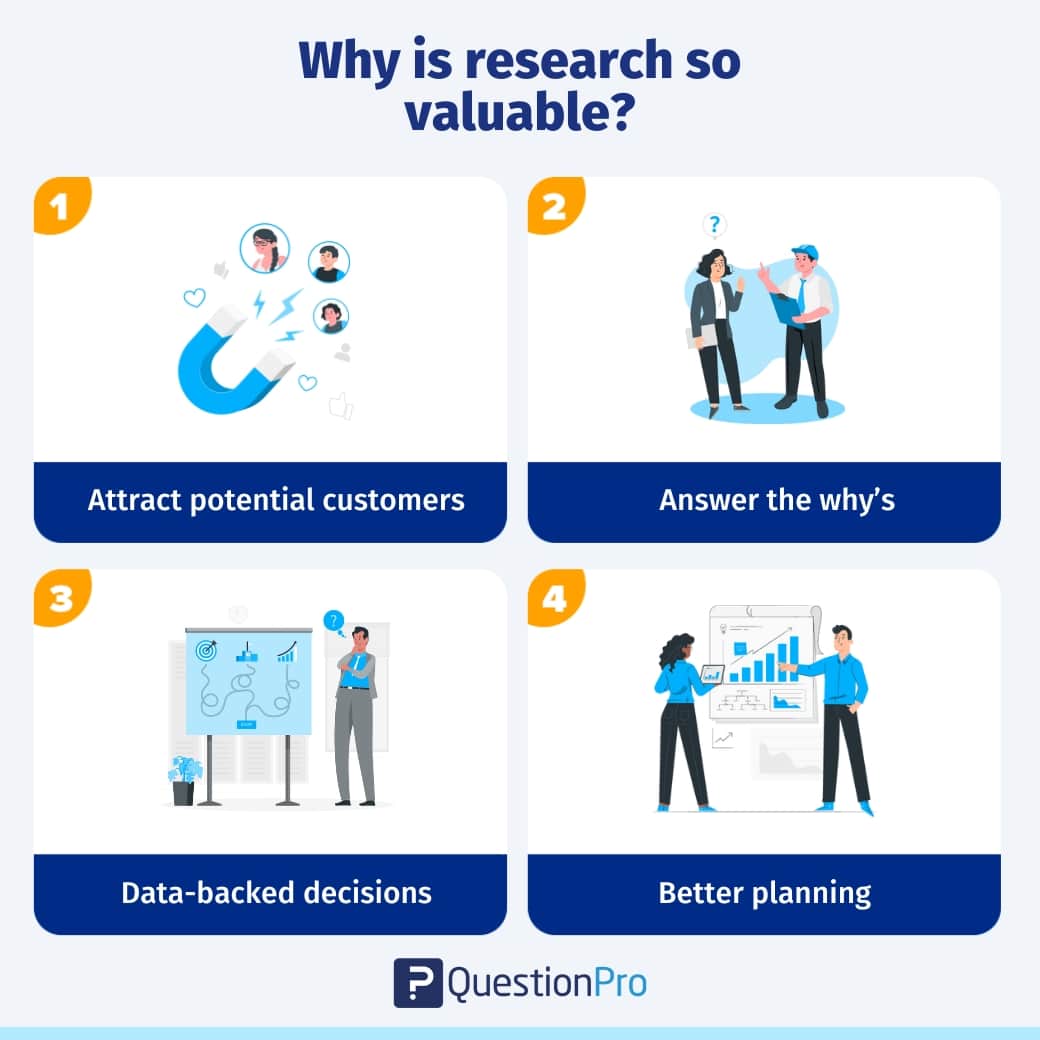
- Attract potential customers: The primary aim of marketing research is to find ways to attract potential customers. It also helps to keep current happy and coming back for more. Understanding your customers entirely is the only way to progress. You’ll lose potential customers if you stop caring about improving your user experience.
- Answer the why’s: Marketing research gives you the answer to the ‘why.’ Make use of user analytics, big data, and reporting dashboards in marketing research to tell you what your users are thinking and why they think and act that way. For example, only marketing research can explain why customers leave you.
- Data-backed decisions: Research beats trends, assumptions, and so-called best business practices. Bad decisions are often taken due to emotional reasoning and guesswork. Focusing on customer experience by listening to your customers directs you in the right direction.
- Better planning: Research keeps you from making absurd decisions by planning in a vacuum. You might not fully gauge what your customers experience and feel while using your product. Customers may use products in a way that surprises you, and they may get confused by features that seem obvious to you. Conducting too much planning but not testing your assumptions will waste your money, time, efforts, and resources. Research helps you save up on all these factors.
LEARN ABOUT: 12 Best Tools for Researchers
Advantages of MKT research
Marketing research and user experience (UX) design help you continuously improve your product by acting on your feedback. Here are the advantages of conducting marketing research:
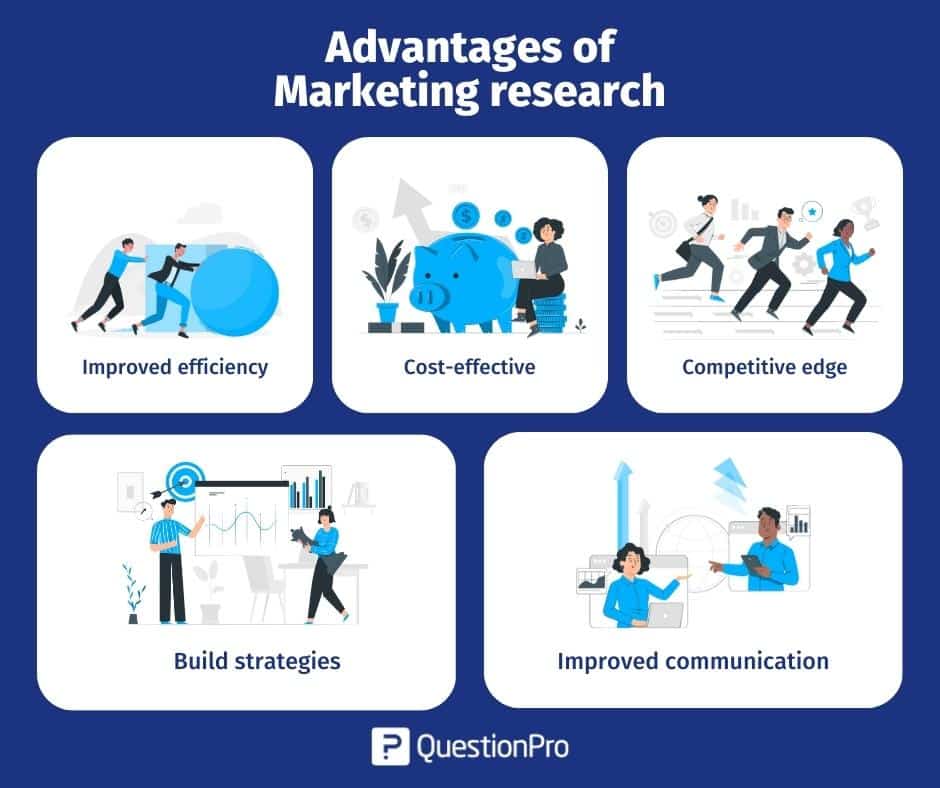
- Improved efficiency: Efficiency draws you closer to your users. You can improve the efficiency of delivering the product to the market and also increase its usability.
- Cost-effective: Marketing research helps you make the right decisions based on consumer demand, thus saving you costs in creating something that customers do not like or want.
LEARN ABOUT: Test Market Demand
- Competitive edge: Quicker, more robust insights can help you place your services and products strategically, gaining a competitive advantage over others.
- Build strategies: You can quickly build, alter, or design new approaches to attract your users and consumers.
- Improved communication: Bridge the communication gap by interacting with consumers and hearing them out. This helps consumers feel wanted and special.
- LEARN ABOUT: Market research vs marketing research
MORE LIKE THIS

Customer Experience Lessons from 13,000 Feet — Tuesday CX Thoughts
Aug 20, 2024

Insight: Definition & meaning, types and examples
Aug 19, 2024

Employee Loyalty: Strategies for Long-Term Business Success

Jotform vs SurveyMonkey: Which Is Best in 2024
Aug 15, 2024
Other categories
- Academic Research
- Artificial Intelligence
- Assessments
- Brand Awareness
- Case Studies
- Communities
- Consumer Insights
- Customer effort score
- Customer Engagement
- Customer Experience
- Customer Loyalty
- Customer Research
- Customer Satisfaction
- Employee Benefits
- Employee Engagement
- Employee Retention
- Friday Five
- General Data Protection Regulation
- Insights Hub
- Life@QuestionPro
- Market Research
- Mobile diaries
- Mobile Surveys
- New Features
- Online Communities
- Question Types
- Questionnaire
- QuestionPro Products
- Release Notes
- Research Tools and Apps
- Revenue at Risk
- Survey Templates
- Training Tips
- Tuesday CX Thoughts (TCXT)
- Uncategorized
- What’s Coming Up
- Workforce Intelligence

IMAGES
COMMENTS
Market research pros. Here are the advantages of conducting market research: 1. Managing risks. The first major advantage of conducting market research is improving your risk management strategy. Doing research helps you understand patterns of consumer behavior so you can calculate the likelihood of your products and services succeeding with ...
The advantages of market research are not just about surface-level benefits. They are about deepening understanding, mitigating risks, and driving sustainable growth. 1. Informed Decision-Making. Market research provides businesses with a wealth of information that forms the foundation for informed decision-making.
Market research is the process of gathering and analyzing relevant data about a target market to gain insights into consumer behavior, preferences, and needs. It involves collecting both qualitative and quantitative data to understand market trends, competitor analysis, and customer satisfaction levels. Market research plays a crucial role in ...
Market research is the systematic approach to gather data on potential clients and target markets in an effort to understand them, beginning with who they are. It's a significant factor in maintaining a competitive advantage and a key ingredient in business strategy. Market research provides information that's useful for decision-making and ...
The Disadvantages of Market Research. Of course, market research also comes with some downsides to consider: Costs. Depending on the scale, research can get expensive, especially primary research. Surveys, focus groups, interviews, and hiring agencies/consultants costs money. For strapped startups, these costs may be prohibitive.
What are the advantages and disadvantages of market research? The advantages of market research include things like gaining a competitive edge, data-driven decision-making, reducing expenditure, finding new markets to enter, trend-spotting, and developing growth-focused strategies. The only disadvantage is in how it's conducted, and the time ...
Marketing research may be defined as the mechanism which helps in linking the customers, producers and several other end-user to the marketer and help in finding and communication of all required information. It is the system that leads to the collection of data, analysis of data and then interprets the required information to the users.
Improved Sales. Market research allows a company to see their buyers' wants and needs and adjust their product to meet those needs. Combining this with an increased awareness surrounding current trends and viral fads empowers a company with all the information they need to optimize their product, advertising, and business plan.
Some of the Disadvantages of Market Research are: Market research can be expensive and time-consuming. It becomes difficult for small businesses to afford market research. Market research can be inaccurate. Sometimes, because of this, businesses make bad decisions about their products or services. It can be biassed.
Disadvantages of Marketing Research 1. Cost and Time Commitment. Market research can be, you see, very expensive and take a lot of time, which is very costly for small businesses with minimal resources and tight budgets. However, it involves the gathering, analysis, and making sense process, hence requiring great time, staff, and technology usage.
The Disadvantages Of Marketing Research: Potential for Misinterpretation. 6. Influence of Bias: The presence of bias, whether in survey design or respondent selection, can skew results and compromise the reliability of the research. Employing rigorous research methodologies, random sampling techniques, and transparent reporting of findings can ...
The next market research types can be defined as qualitative and quantitative research types: 3. Qualitative research. Qualitative market research is the collection of primary or secondary data that is non-numerical in nature, and therefore hard to measure. Researchers collect this market research type because it can add more depth to the data.
Disadvantages of Not Doing Market Research. The importance of conducting market research goes beyond a few feel-good assessments. Market intelligence hands organizations a blueprint for creating the best version of themselves. Market research offers many benefits, and neglecting to do market research can hurt your company in several ways: 1.
According to Wikipedia: "Marketing research is the systematic gathering, recording, and analysis of qualitative and quantitative data about issues relating to marketing products and services. The goal is to identify and assess how changing elements of the marketing mix impacts customer behavior.".
Marketing research is the compass that guides businesses through the ever-changing landscape of consumer preferences and market trends. ... Disadvantages of Marketing Research Cost. Marketing research can be expensive, especially if it involves hiring external agencies or conducting large-scale studies. Costs can include survey design, data ...
The disadvantages are it can be time-consuming and potentially costly, plus there's a risk of survey bias creeping in, in the sense that research samples may not be representative of the wider group. Secondary research . Primary market research means you collect the data your business needs, whereas the types of market research known as ...
Market research is an integral step in a successful business development effort, whether you are part of a startup, launching a new product or rebranding your business. ...
Market research is crucial for business insights and strategic decisions. It mitigates risks, enhances sales, and improves customer perception. Despite its importance, market research can be ...
Another disadvantage of doing market research is the time associated with doing the research and performing questionnaires and interviews. Time is directly related to the costs, as the longer the ...
Market research is the organized process of gathering information about your target customers and market. Market research can help you better understand customer behavior and competitor strengths and weaknesses, as well as provide insight for the best strategies in launching new businesses and products. There are different ways to approach ...
Market research is the most critical piece of a marketing launch because it helps businesses understand the audience segment and, by extension, the actual need of a product or service.
Marketing research is defined as any technique or a set of practices that companies use to collect information to understand their target market better. Organizations use this data to improve their products, enhance their UX, and offer a better product to their customers. Marketing research is used to determine what the customers want, and how ...
Market research is a process of gathering, analyzing, and interpreting information about a given market. It takes into account geographic, demographic, and psychographic data about past, current, and potential customers, as well as competitive analysis to evaluate the viability of a product offer. In other words, it's the process of ...
Disadvantages. DIY Marketing Research. Risk of Bias. ... Ultimately, the decision between DIY and full-service marketing research (or the hybrid "do-it-together" approach) depends on your company's specific needs, budget, expertise, and resources. For some, the cost savings and control of basic DIY platforms may be appealing, while others ...
What are the advantages and disadvantages of an online legal studies degree? Here are some advantages and disadvantages of an online legal studies degree: Advantages. Flexibility: Online programs allow students to study at their own pace, making it easier to balance education with work or family commitments.